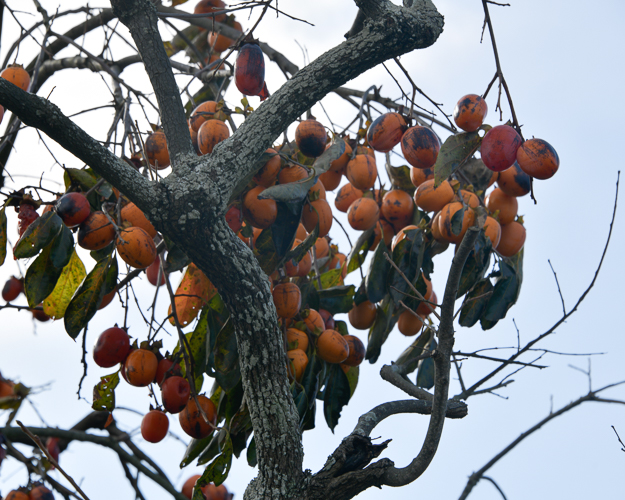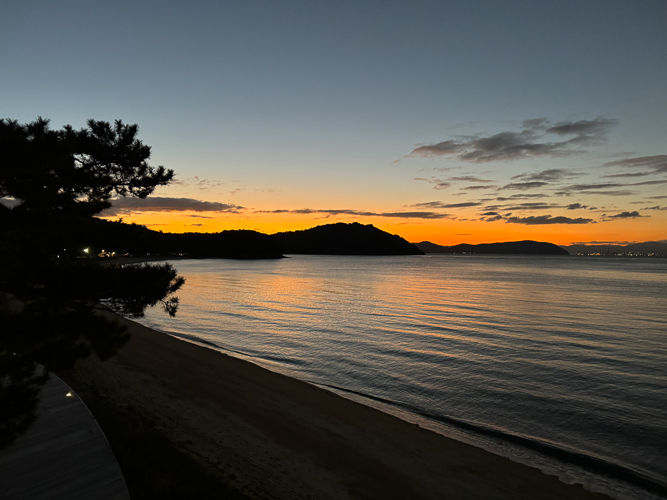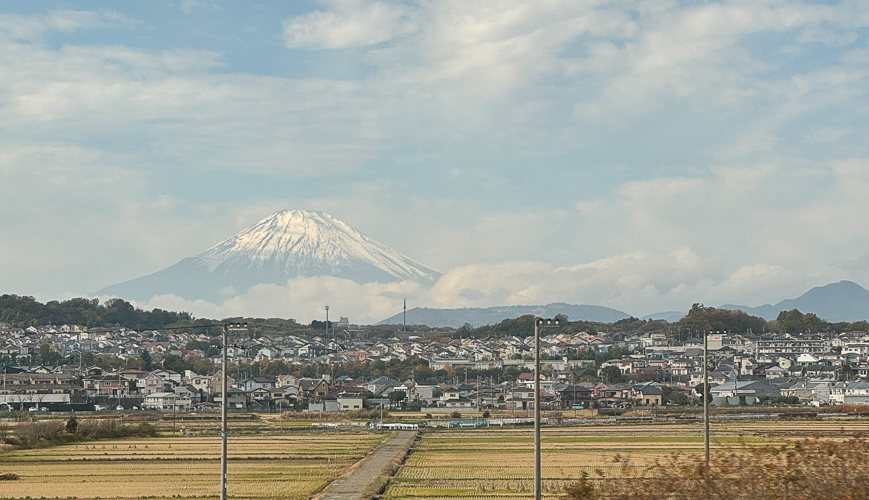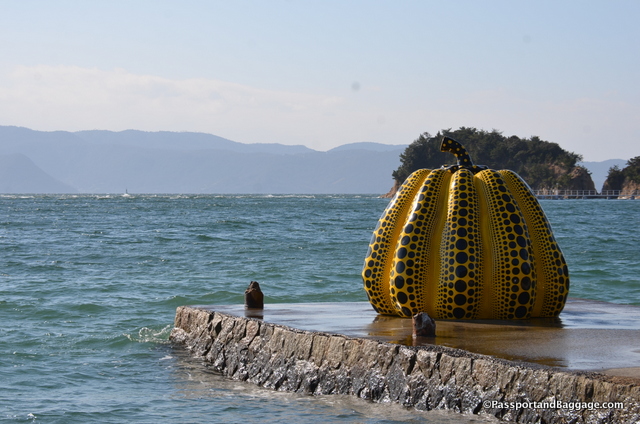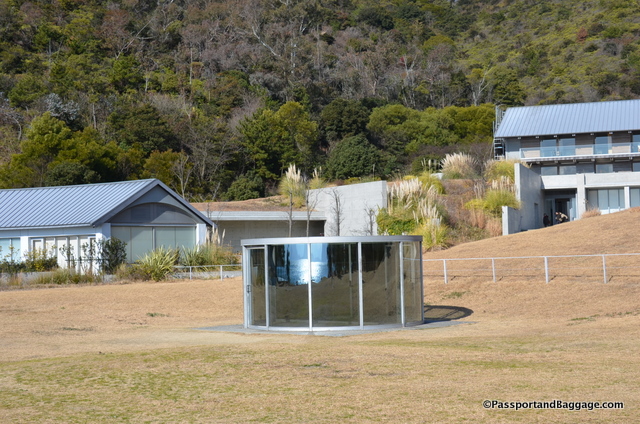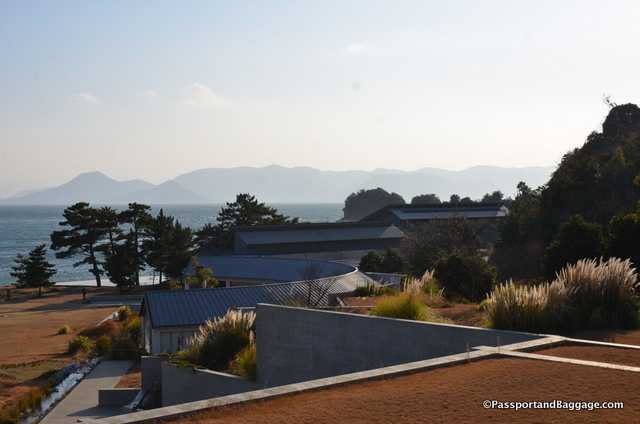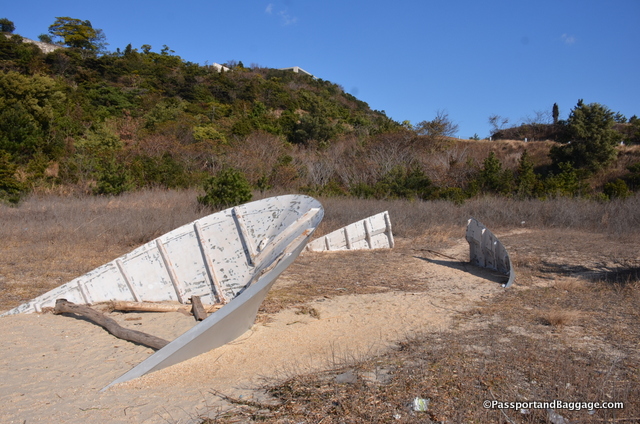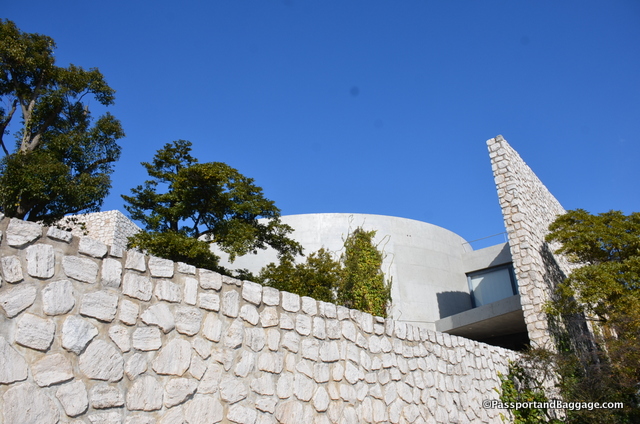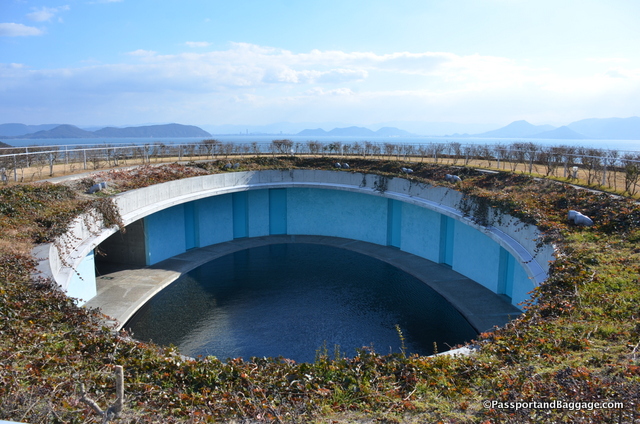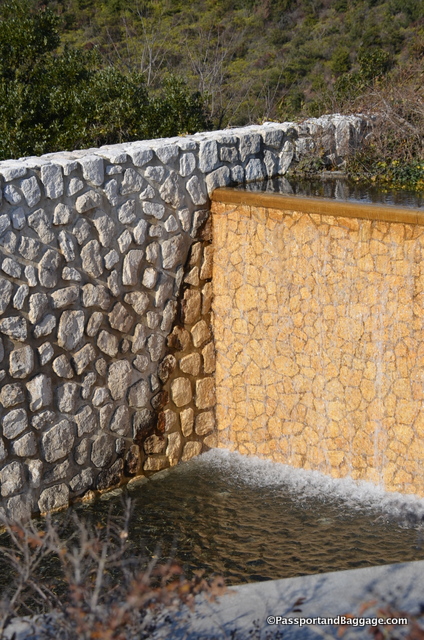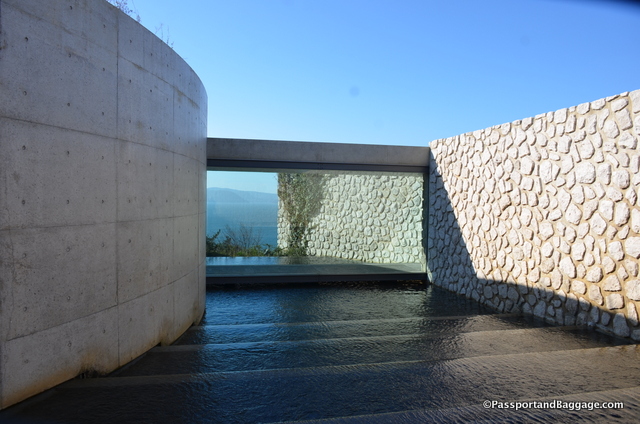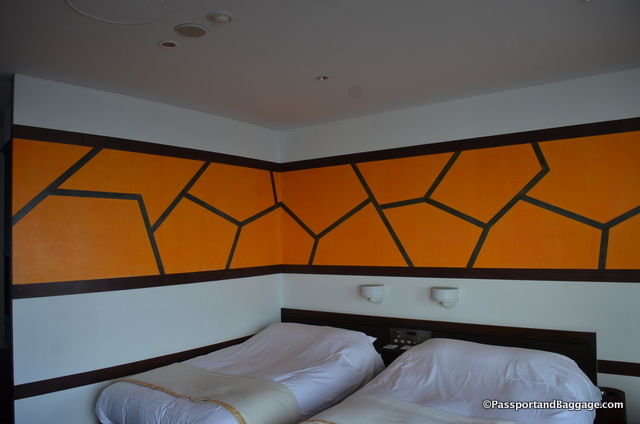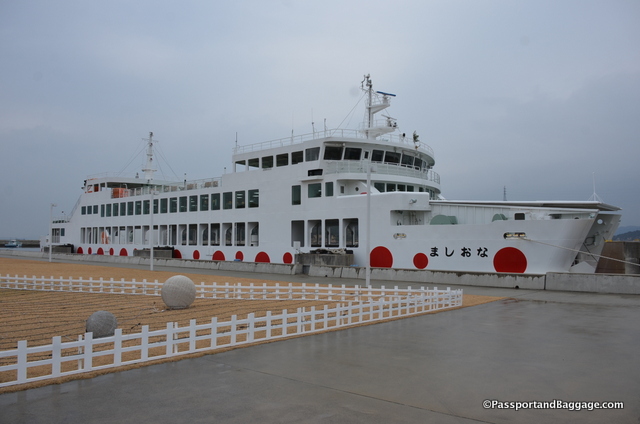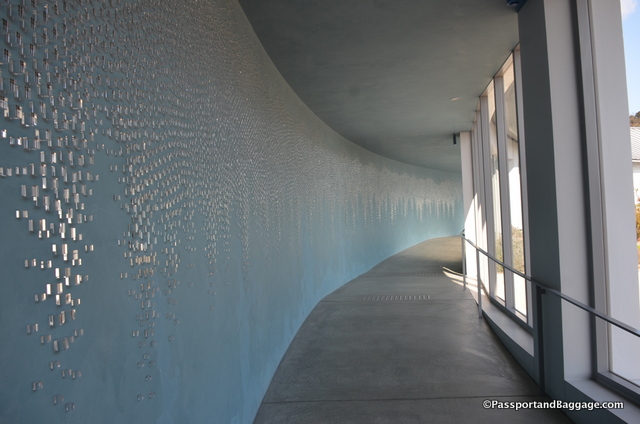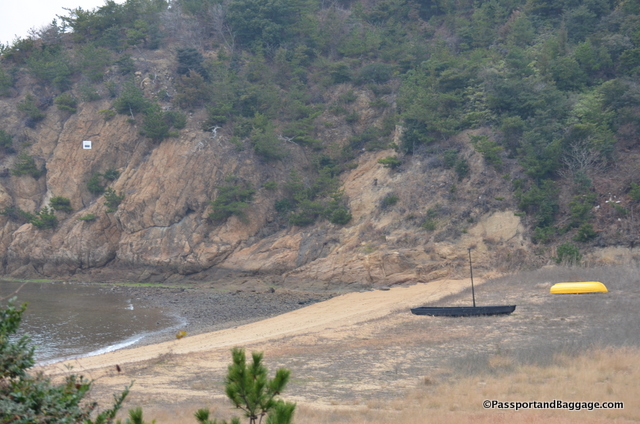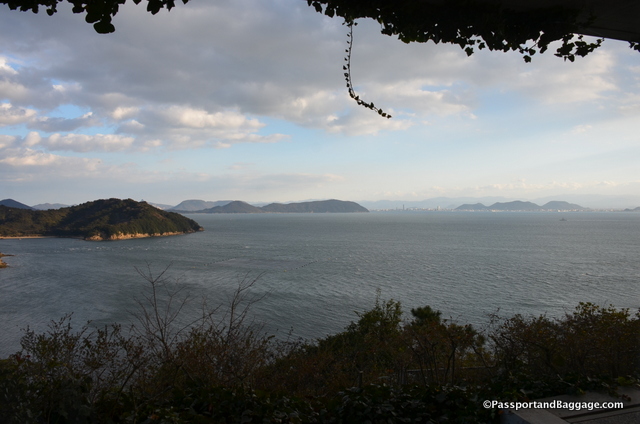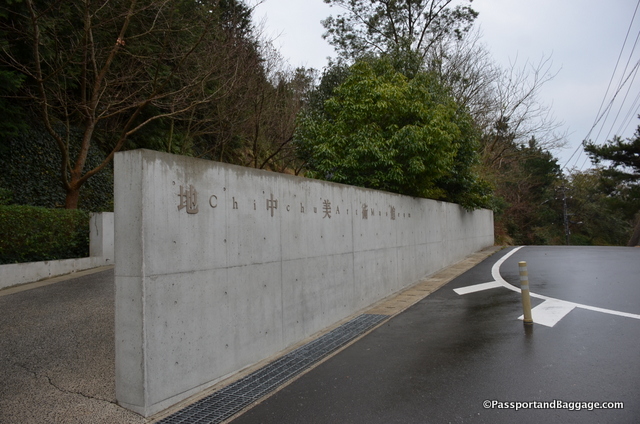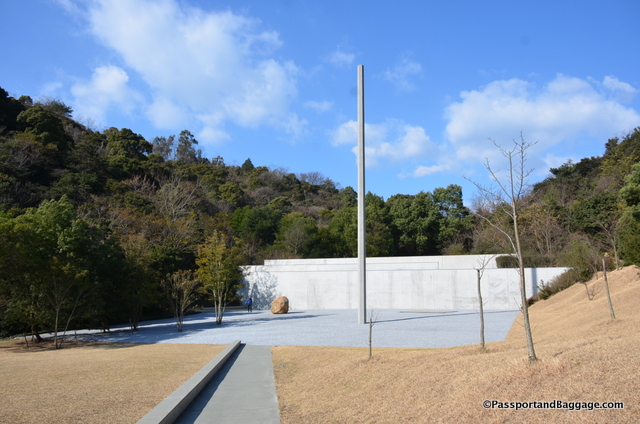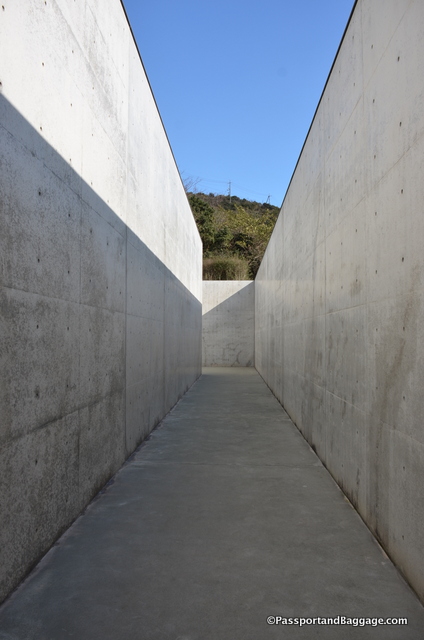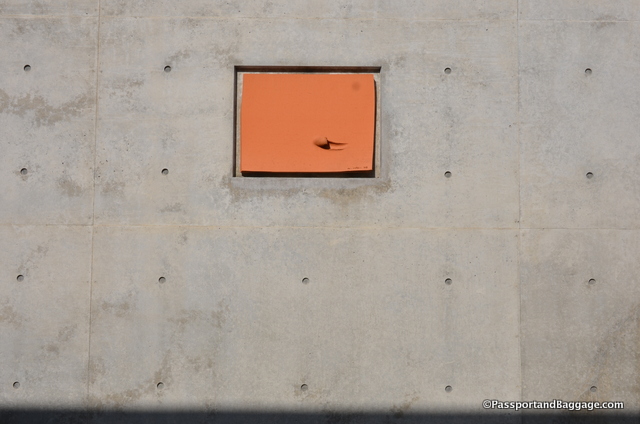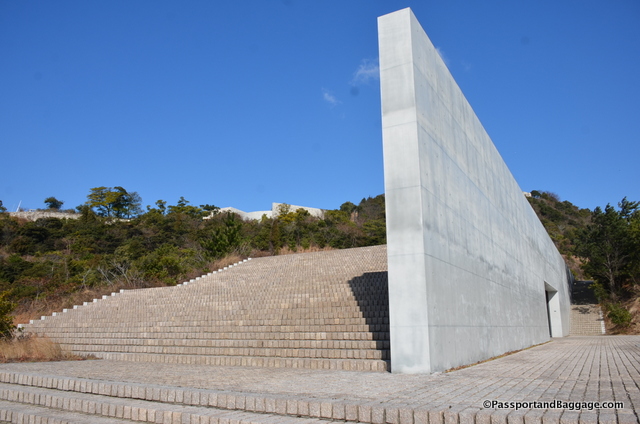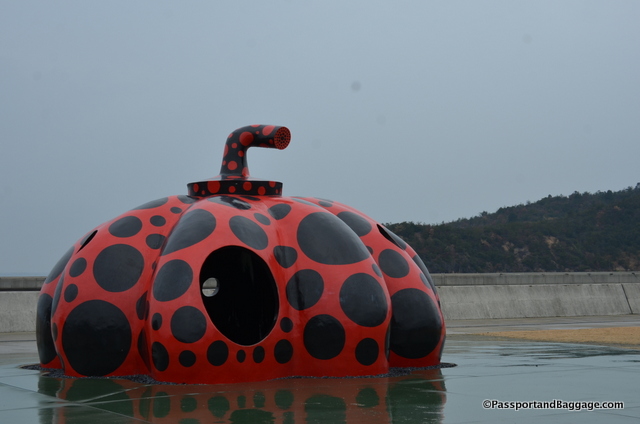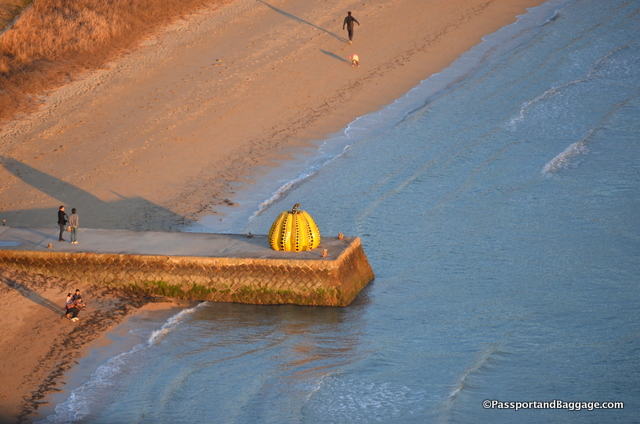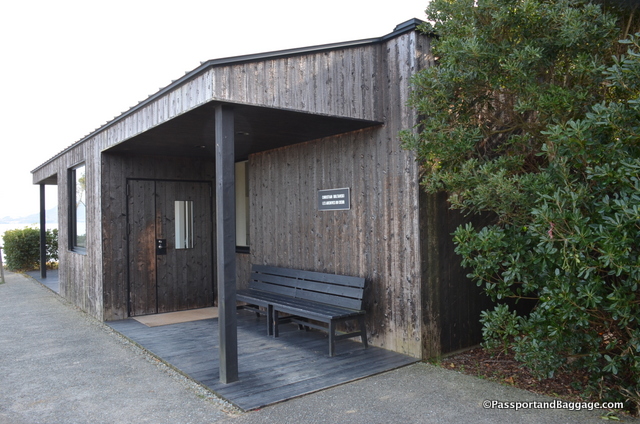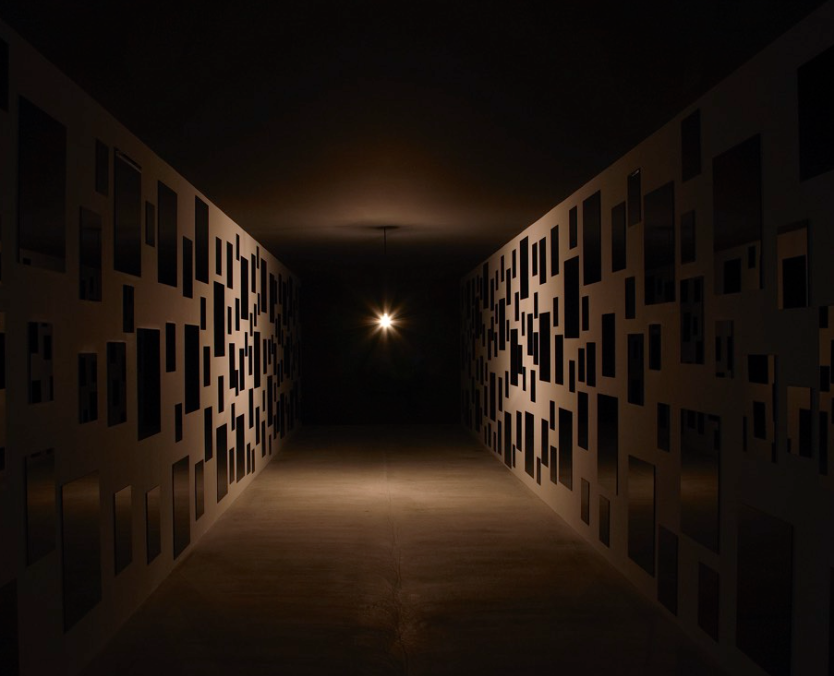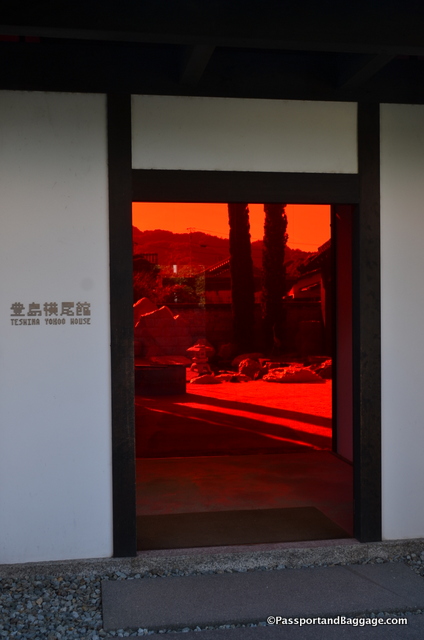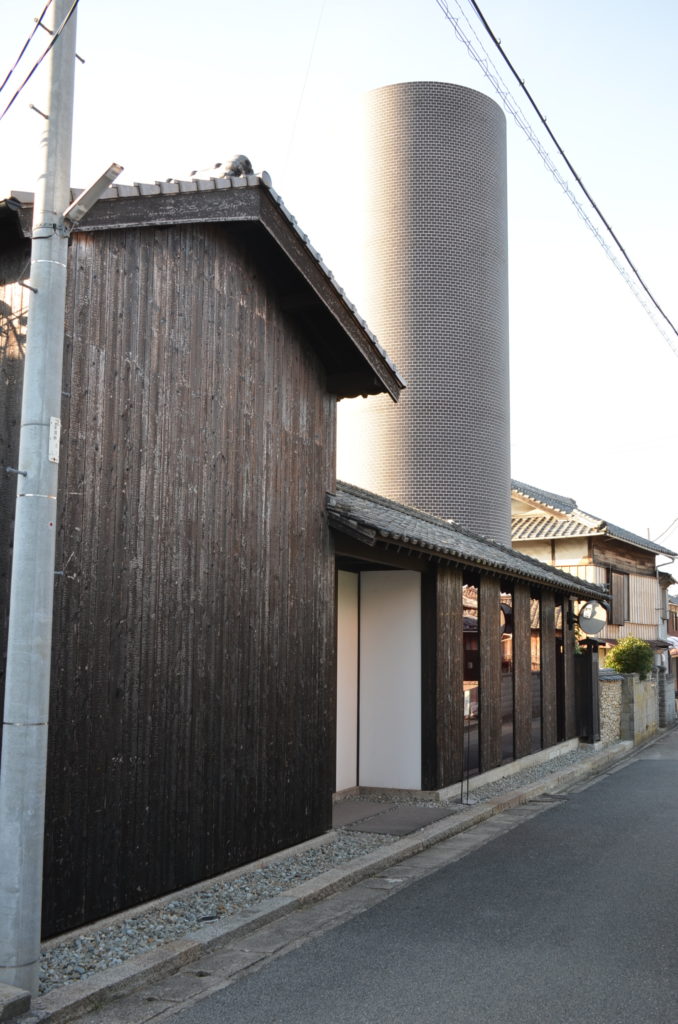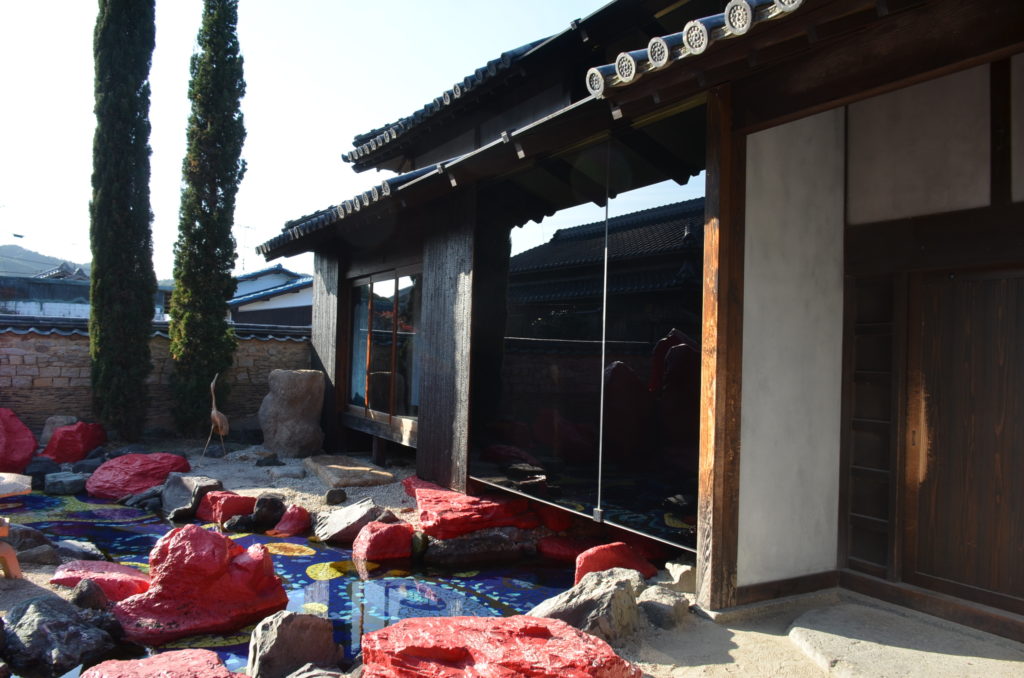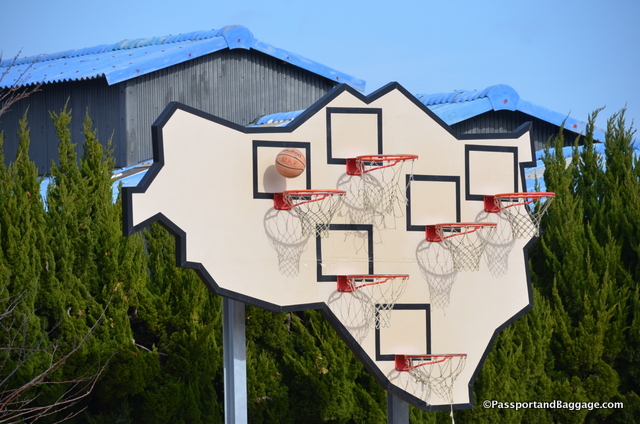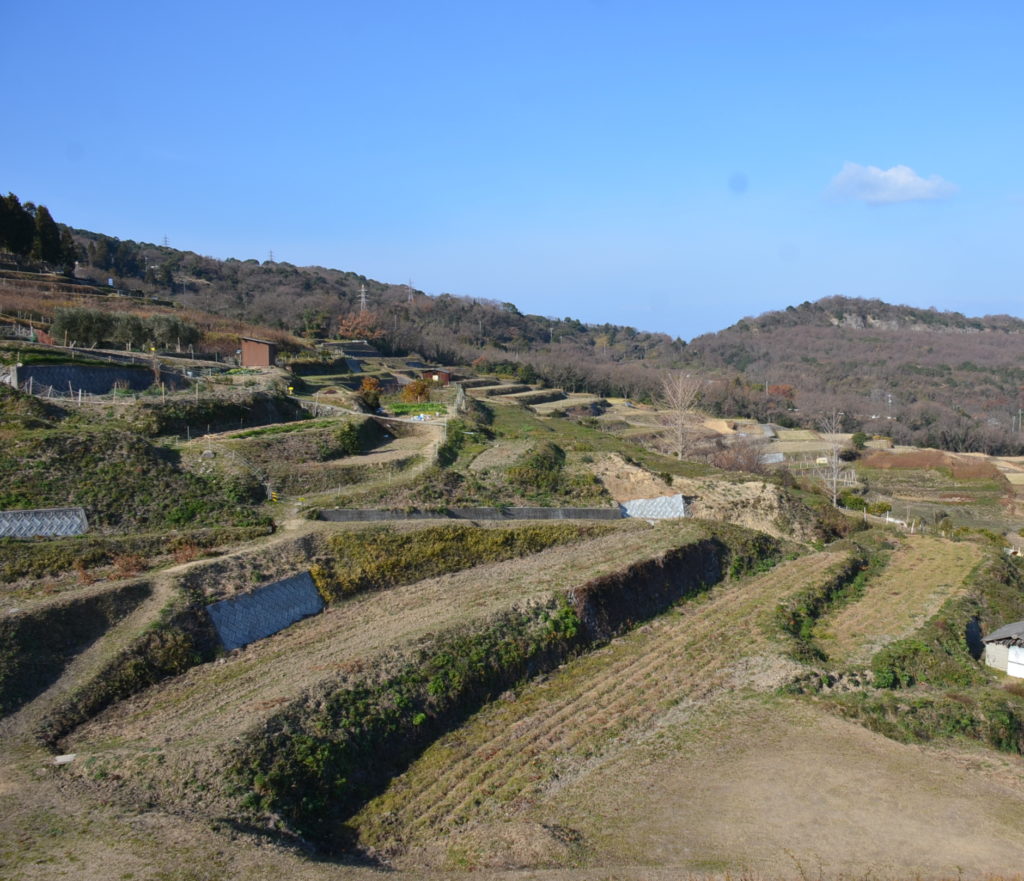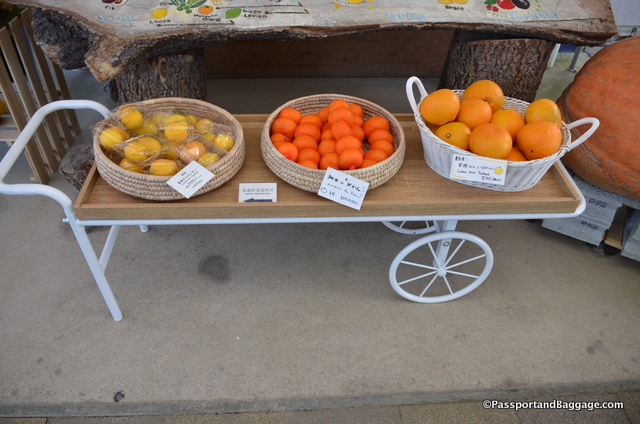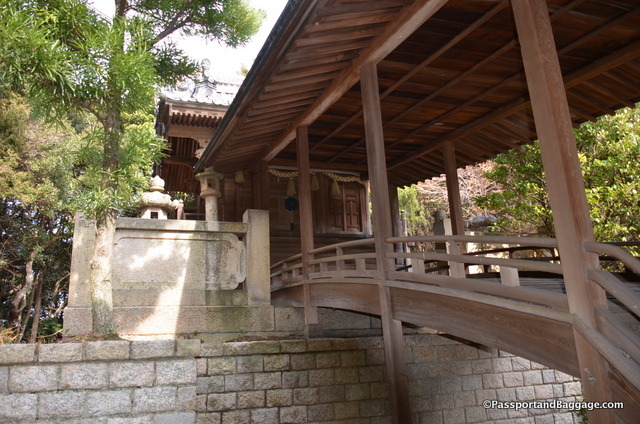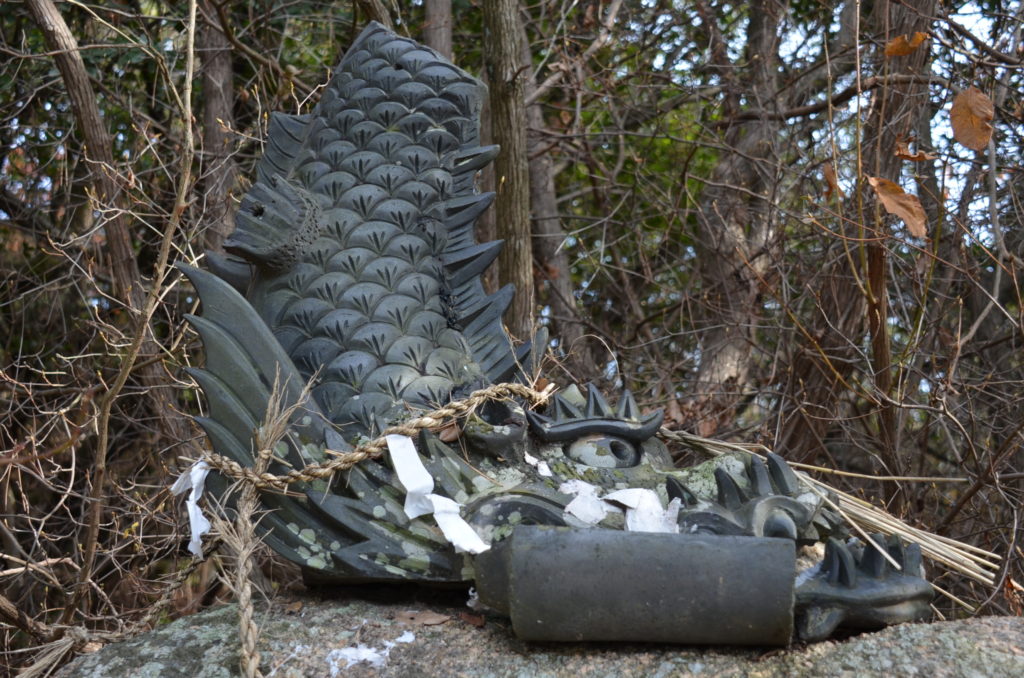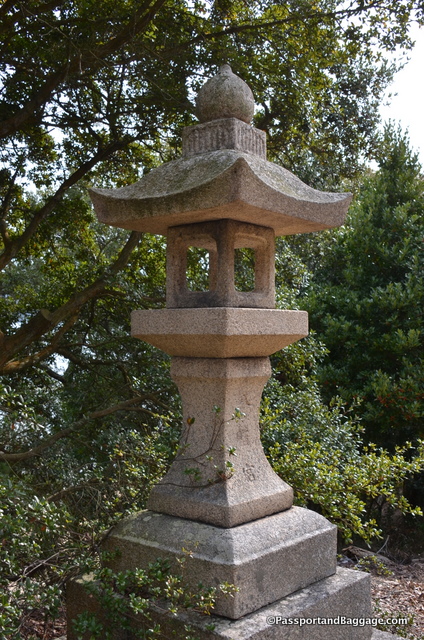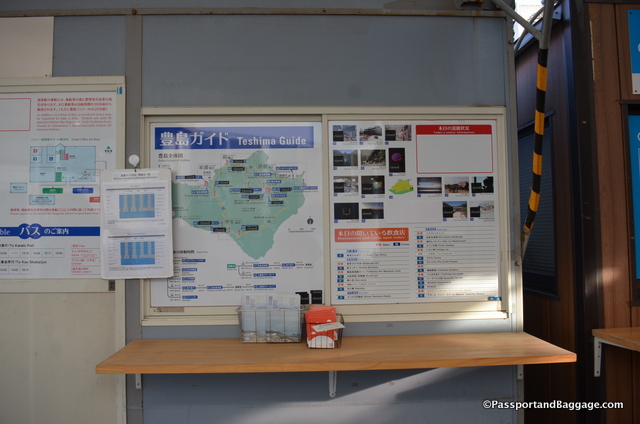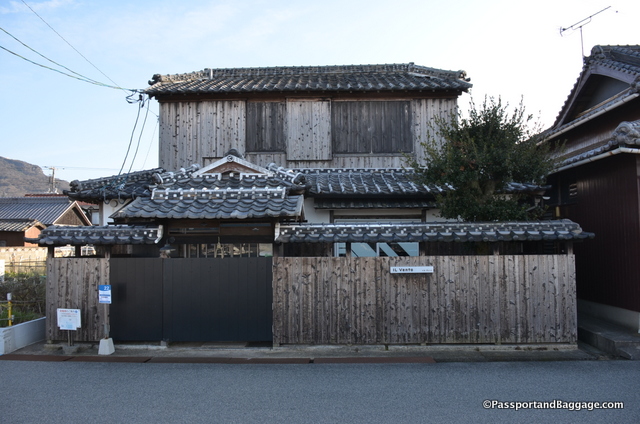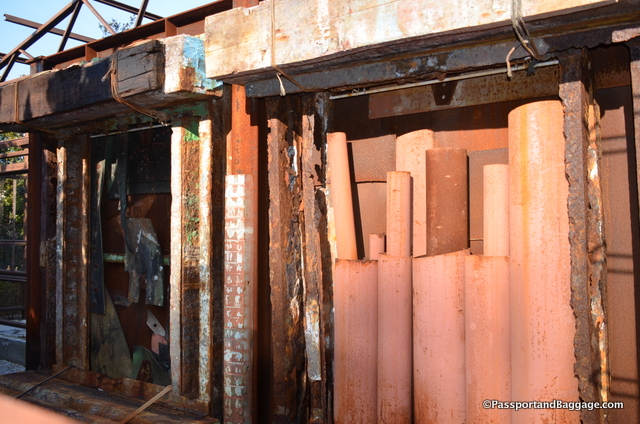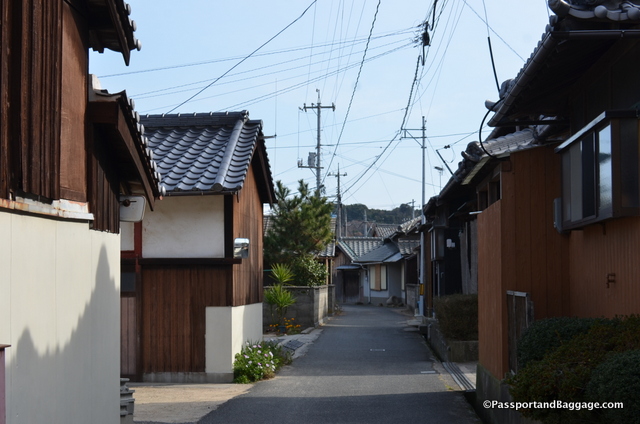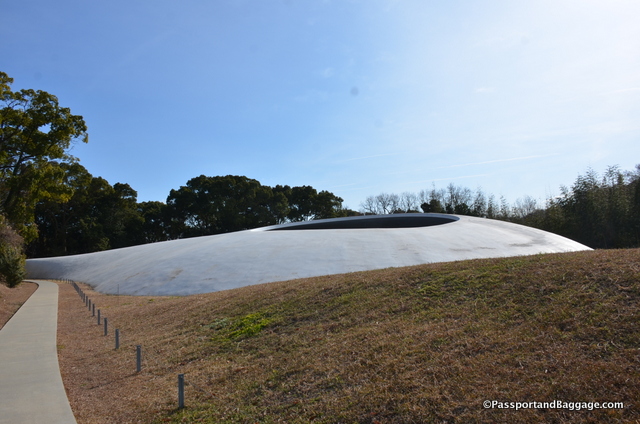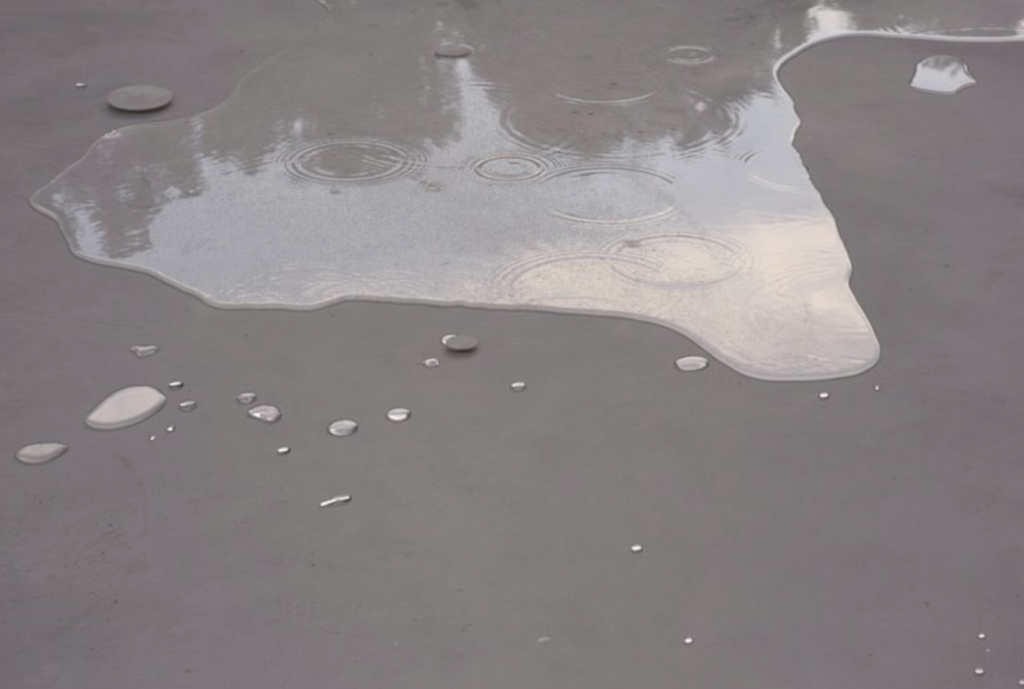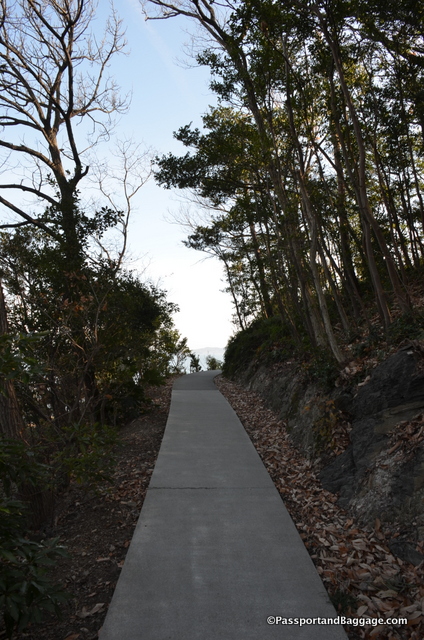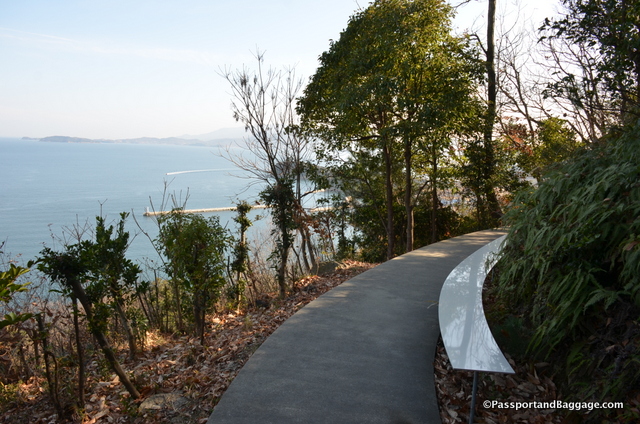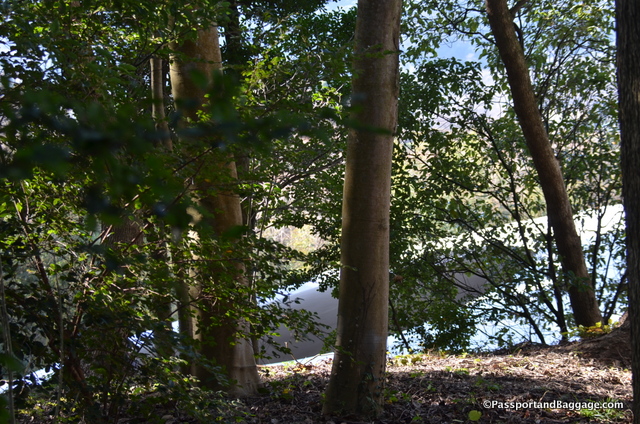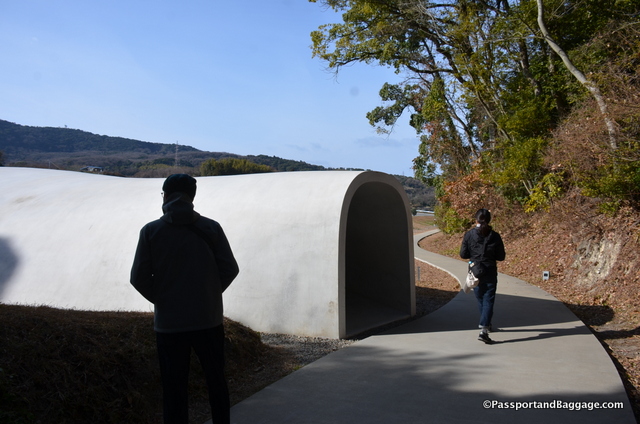January 2018
The Art House Project was a large leap into the lives of the locals of Naoshima Island. There are many articles out about how the local people were not sure about the entire Benesse project, and how through the years they have learned more and more about contemporary art, and have learned to love the project, the art, and I am sure, the employment that comes with it.
The Art House Project involves older houses in the Honmura Port area of Naoshima remodeled into works of art. There are seven projects, and photos are not allowed in any of them.
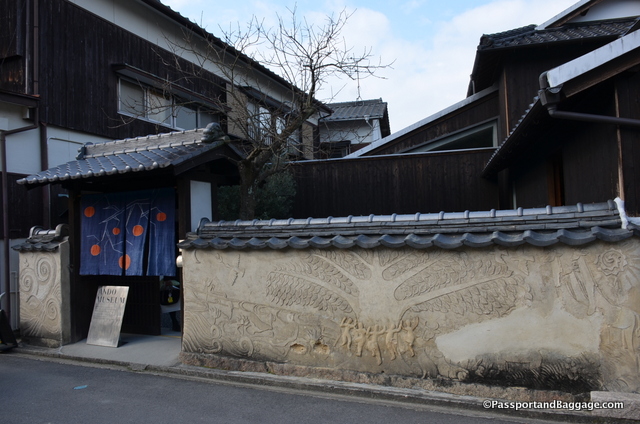
The Ando Museum
The Ando Museum opened in March 2013. The museum is designed by the man it is named after, Ando Tadao, and is an homage to himself.
The Ando Museum looks like the regular, 100-year-old traditional residence that it is, from the outside, blending in perfectly into the town’s neighborhood. The inside of the building, however, combines traditional interior design with Ando’s signature use of concrete, creating a rather intriguing atmosphere with small unique spaces. The interior is truly a work of art in concrete. Entry is ¥510 and is closed on Mondays – as is most everything within the Benesse Properties, with the exception of the Benesse House Museum.
For the remaining Art-Houses, you purchase a card for entry to all at ¥1030 or each individually for ¥410
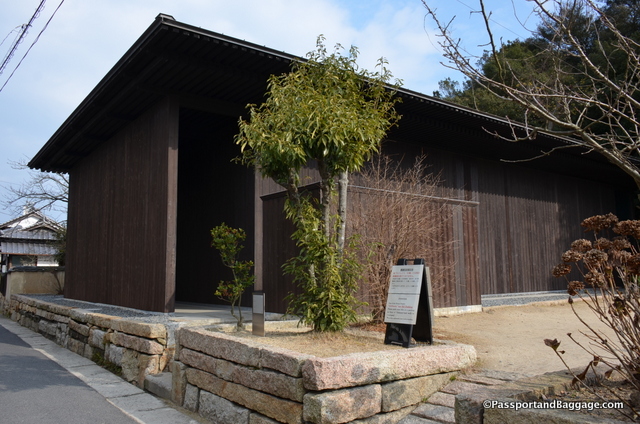
Minamidera
Minamidera is a new building, and it was designed by Tadao Ando to accommodate the works of James Turrell. The vicinity was once home to five temples and shrines, as well as the ruins of a castle, making it the center of history and culture in Naoshima. The name Minamidera (literally “southern temple”) seeks to preserve the idea that the temples which once stood here were emotional support for the people.
The Turrell installation is all about light, so if one is claustrophobic it is not a good house to visit. It is an interactive exhibit and allows only 5 to 8 people in at one time, approximately every 15 minutes. During the holiday season, this was the only line I stood in, and that was for a mere 5 minutes.
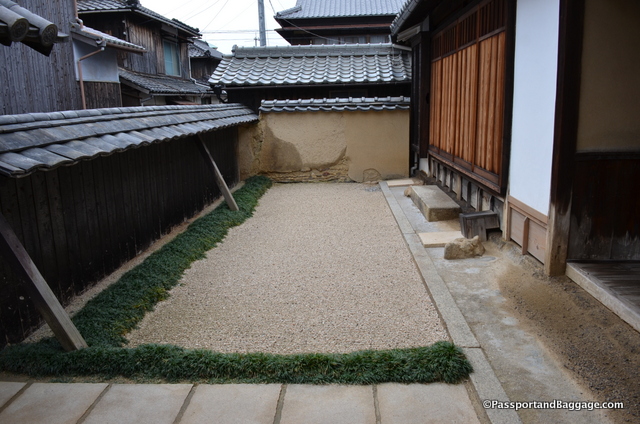
Kadoya
Kadoya was the first building in the Art House Project to be completed. The house was constructed roughly 200 years ago, and it was restored to its original appearance with a stucco finish, smoked cedar boards (shou shugi ban), and traditional roof tiles. The townspeople of Naoshima participated in the creation of the work Sea of Time ’98 by Tatsuo Miyajima inside the main room of the home.
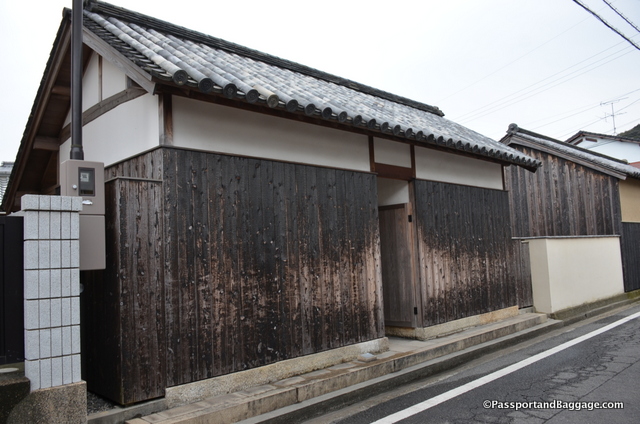
Gokaisho
The name Gokaisho (literally “place to play go”) is derived from the long-ago custom of the islanders gathering here to play the game of go. Yoshihiro Suda converted the structure into an art space, and his work Tree of Spring, inspired by the work Falling Camellia by Hayami Gyoshu, is displayed in one of the two rooms.
Suda has several pieces throughout the island. I first spotted his work in the Bennese House Museum, there appeared to be weeds growing out of the concrete wall, it was a lovely exhibit titled “Weeds” by Sudo made of painted wood. The wood is so incredibly thin as to look exactly like a leaf. In the hallway to the Terrace Restaurant is one of the camellias that is in Gokaisho.
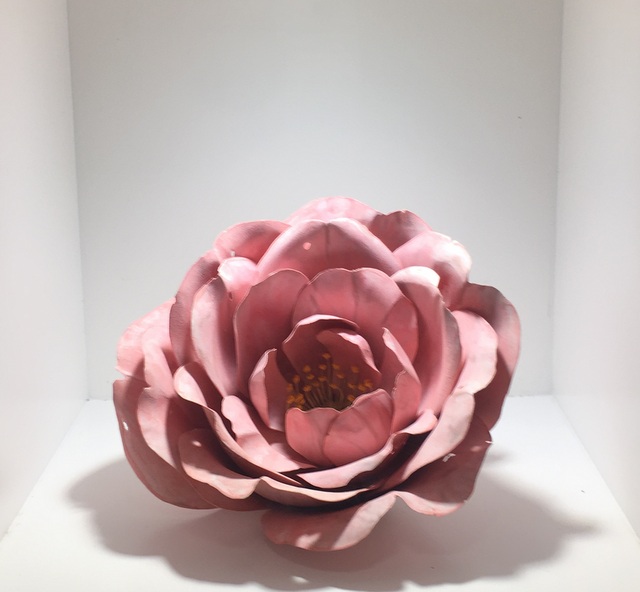
A Camellia by Yoshihiro Suda
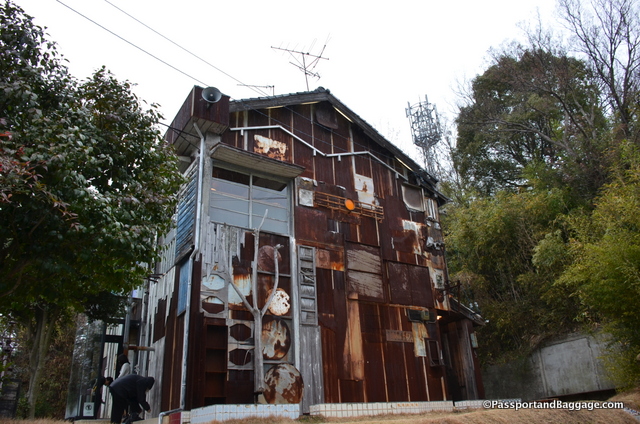
Haisha
Haisha, meaning “dentist”, Shinro Otake converted this dentist’s home and office into a very intriguing work of art. The house incorporates an eclectic array of stylistic elements. The title of the work is Dreaming Tongue.
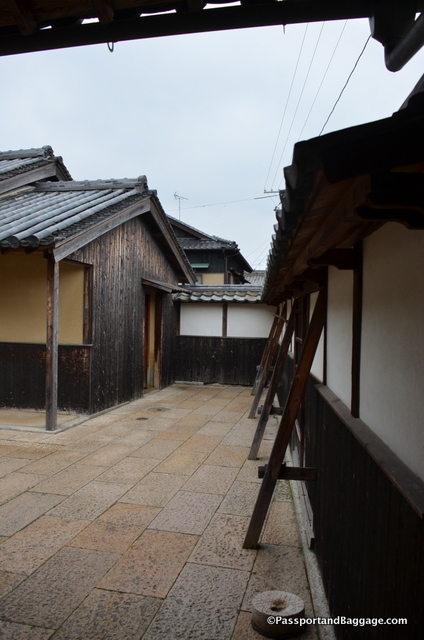
Ishibashi
Formerly the home of the Ishibashi family, who made their fortune producing salt in the Meiji Period, it was used as a private home until April 2001. The salt-making industry supported the livelihood of people in Naoshima for many years, and restoring the home was considered important to understanding the history and culture of Naoshima. Hiroshi Senjyu spent five years from the original conception of the idea of developing the entire space of this “tangible memory” into a work of art. Senjyu kept most of the home intact, and added his own paintings, it is in spectacular shape and is truly a work of Japanese architecture nicely blended with Japanese art.

The Go’o Shrine
This shrine sits atop of a hill, very close to a working temple. It is a stunning piece of artwork. The artist is Hiroshi Sugimoto A flight of glass stairs links an underground stone chamber with the main hall. The main hall and worship hall are based on the style of early shrine architecture, as well as the artist’s own aesthetic sensibility.
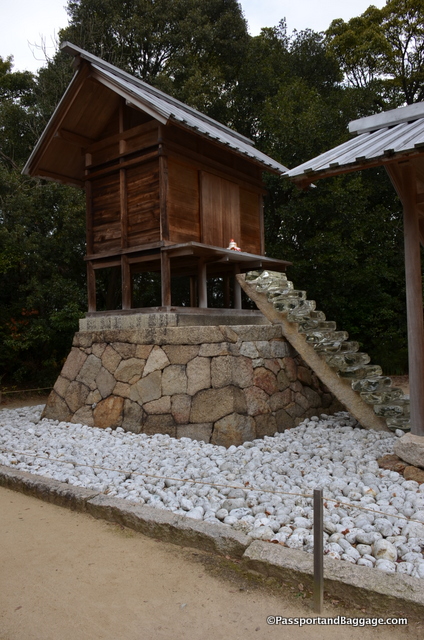
A beautiful set of glass stairs is easily seen above ground
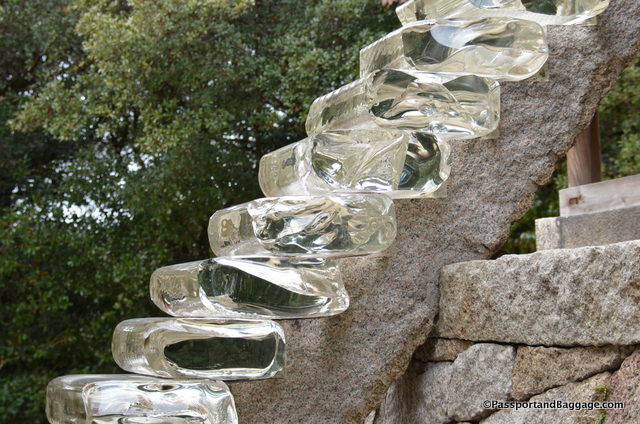
You are then given a flashlight and sent slightly down the hill to a very, very, very narrow corridor.
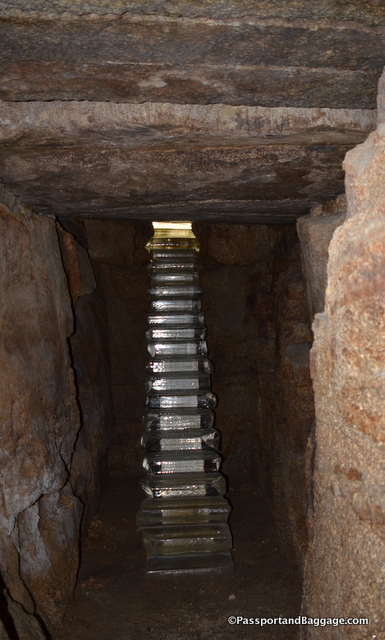
The stairway underground
These wonderful pieces sit amongst the small town of Honmura. Honmura is a wonderful area to wander and explore.
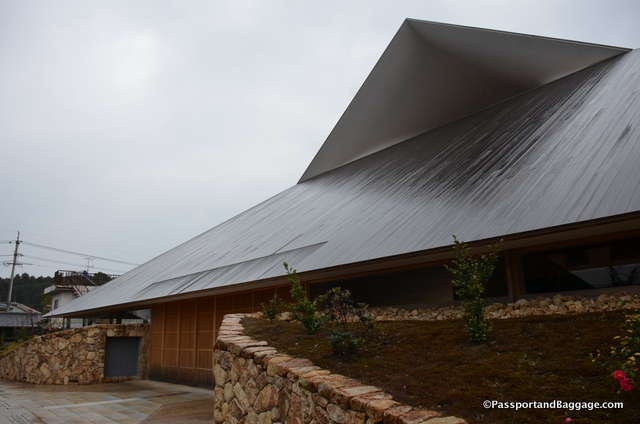
Naoshima Hall
Naoshima hall, designed by architect Hiroshi Sambuichi is a multi-purpose facility, consisting of the main hall, a community center, and a garden. It utilizes the island’s prevailing winds to circulate air inside the hall
The hall took the top spot in the Best New Public Building category of the 2017 Wallpaper* Design Awards, presented by the British magazine of the same name. This was the first time that a Japanese architect had received the award.
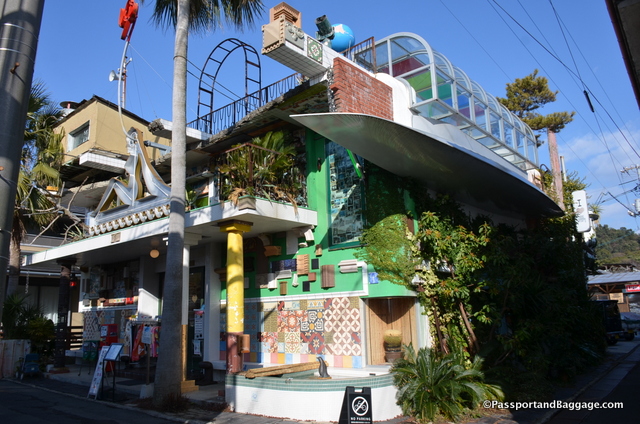 One other exhibit space is at Miyanoura Port titled Bath House. It is actually a bathhouse, and the only way to view the art inside is to take a bath, but the building is fun to examine from the outside as well. The facility was created by artist Shinro Ohtake and is operated by the Town-Naoshima Tourism Association. The place is actually called “I♥︎湯” and is a play on words, the Japanese character for hot water (湯) is read as yu.
One other exhibit space is at Miyanoura Port titled Bath House. It is actually a bathhouse, and the only way to view the art inside is to take a bath, but the building is fun to examine from the outside as well. The facility was created by artist Shinro Ohtake and is operated by the Town-Naoshima Tourism Association. The place is actually called “I♥︎湯” and is a play on words, the Japanese character for hot water (湯) is read as yu.
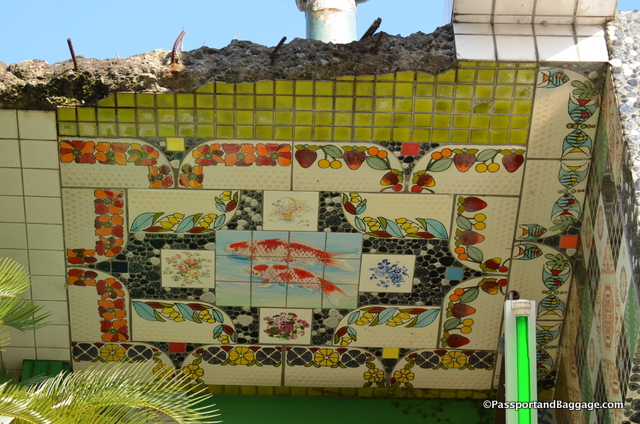 *
*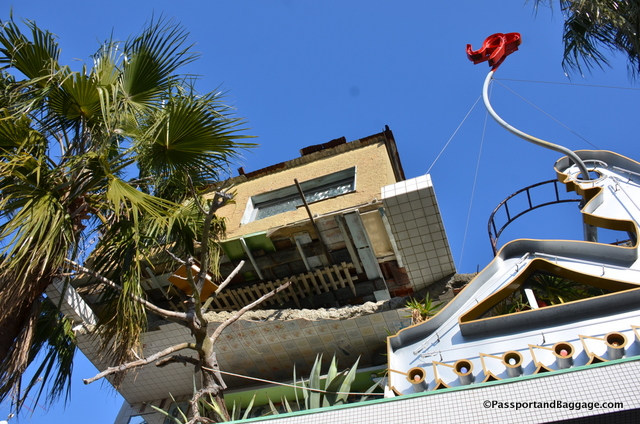 *
*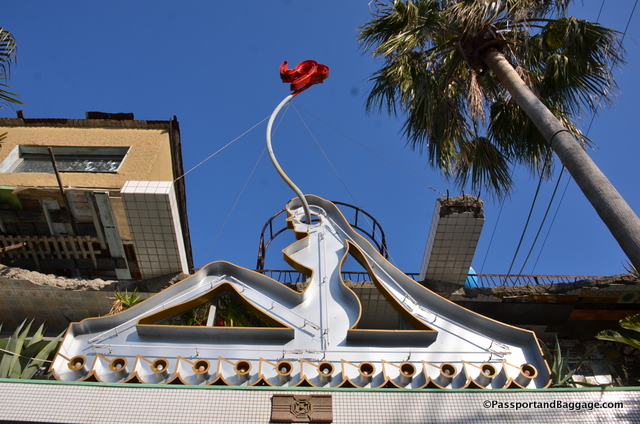
Due to the season, many of the art galleries are closed, but it is still easy to get your fill of art and architecture at Benesse.
The town of Miyanoura is also a very sweet town and worth walking around, here are a few shots of that town:
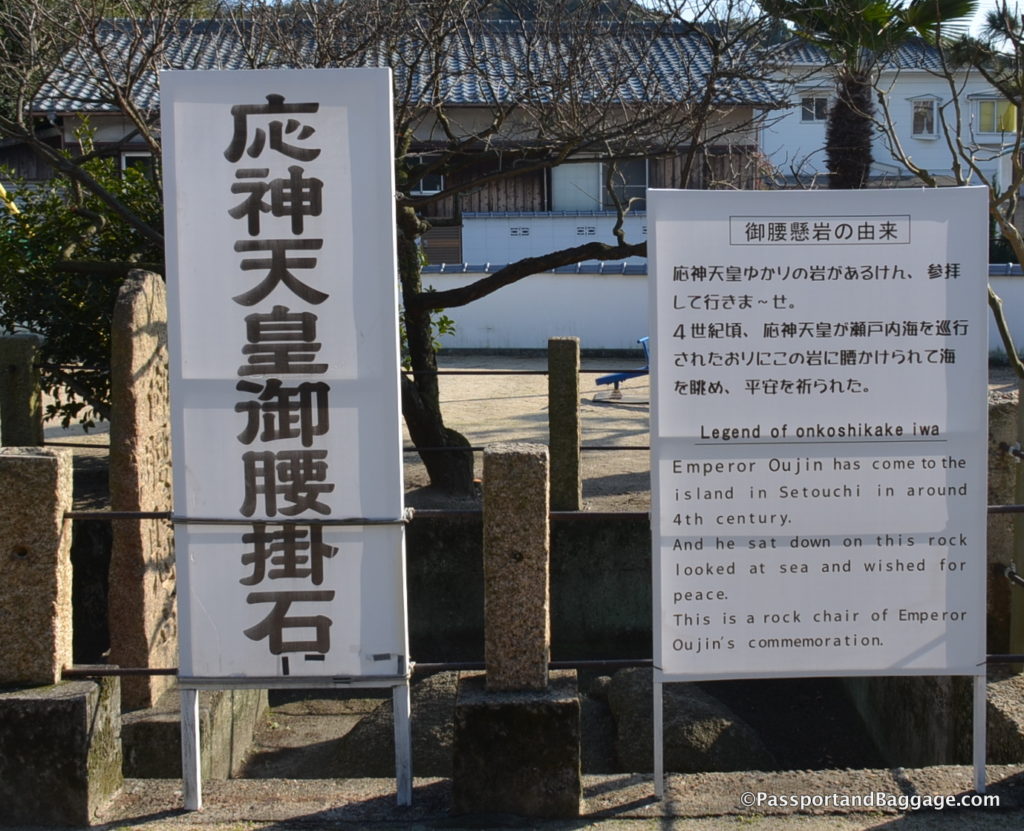
The local shrine, directly across from the port is lovely and historic
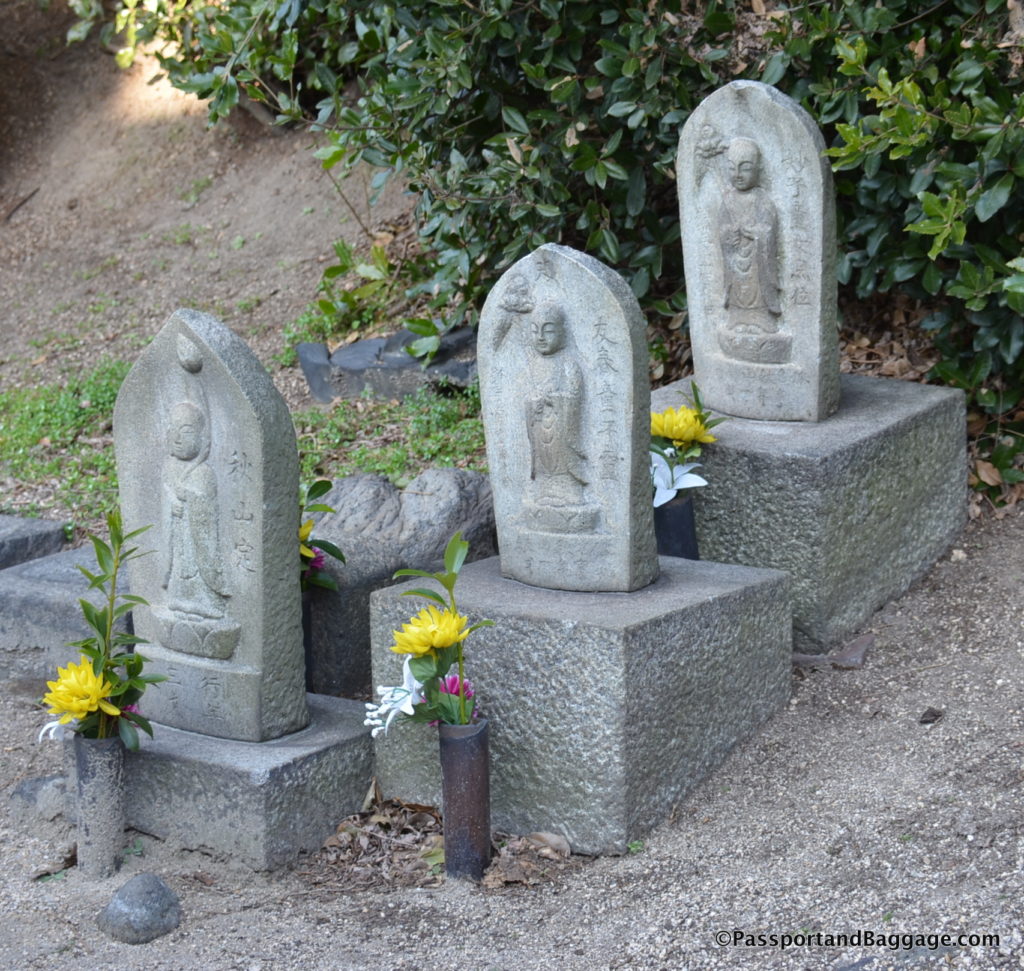
Not far from the port is a cemetery. It was the New Year so flowers were everywhere.
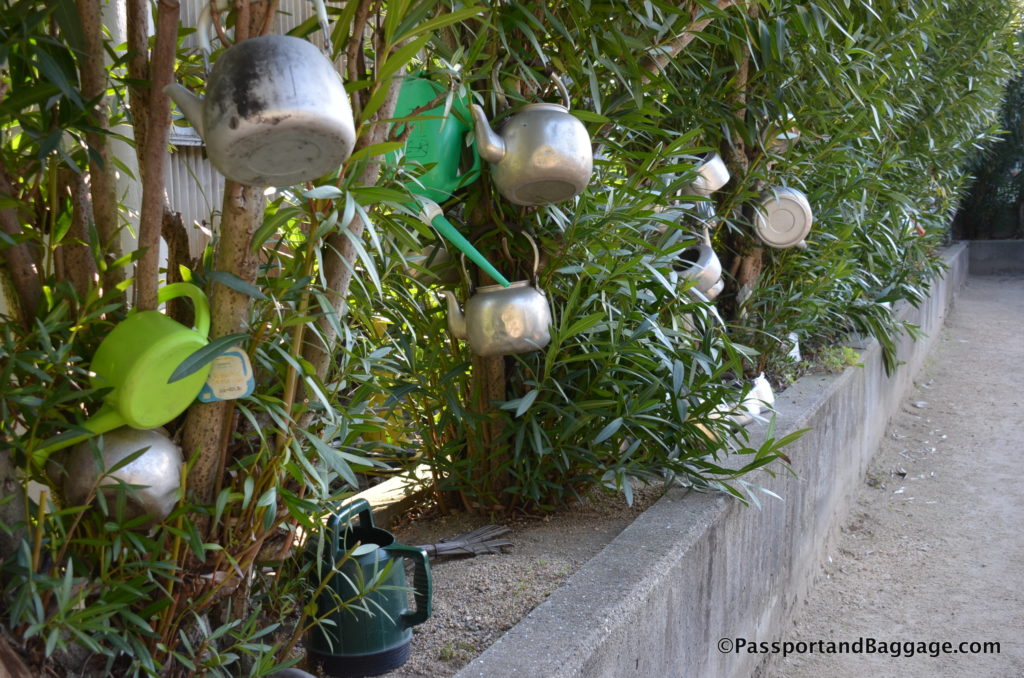
Watering vessels at the cemetery
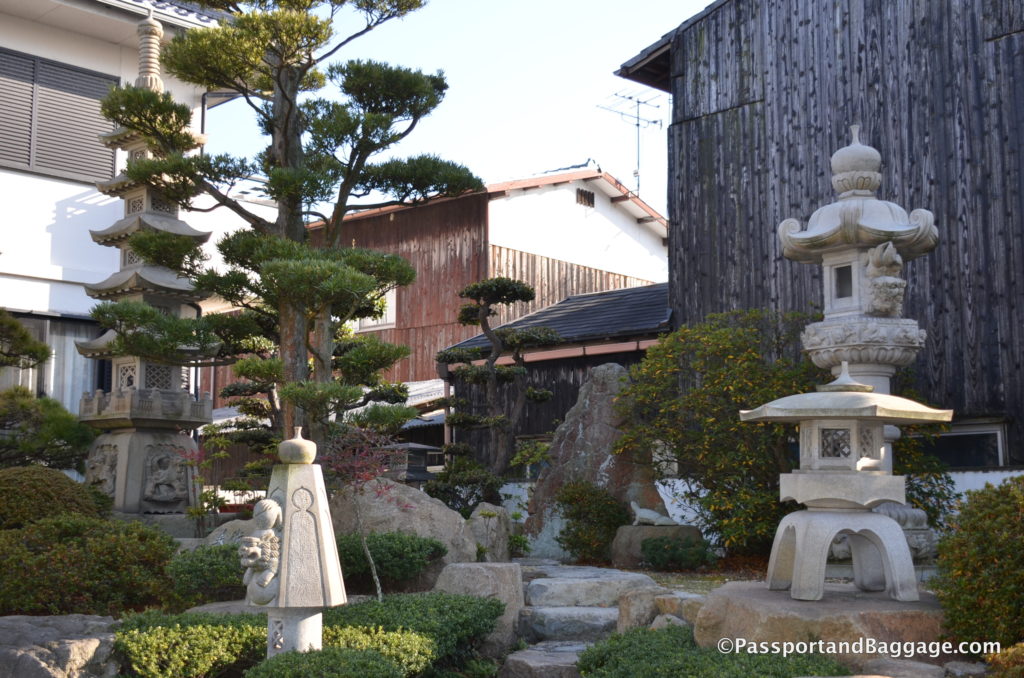
Someone’s stunning front yard
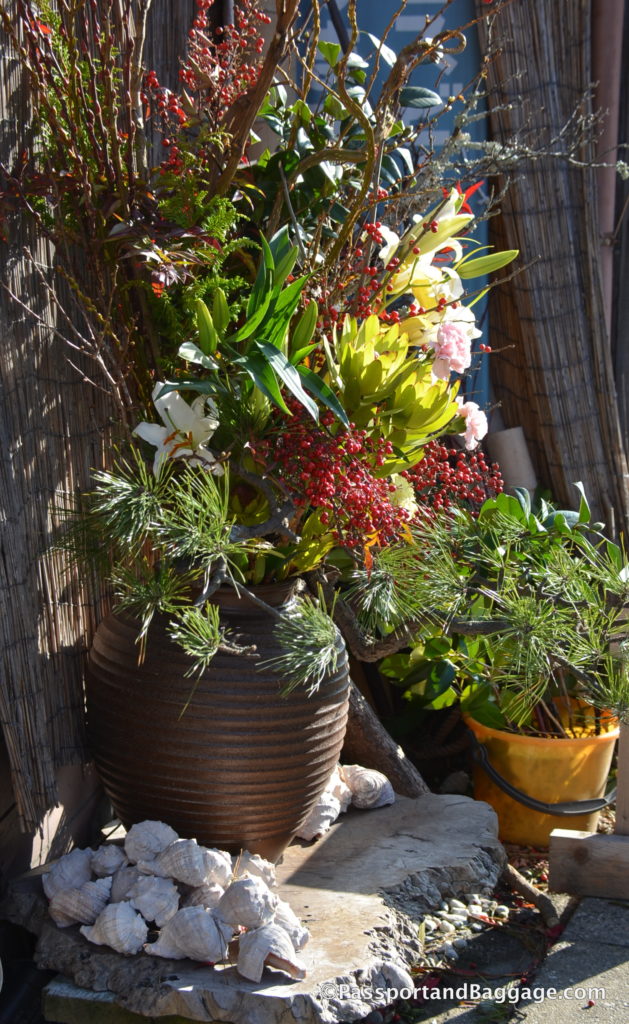
Flowers are doorsteps are classically Japanese, I loved these accompanied by seashells.
I will end this post with some fun photos taken around the Honmura area.
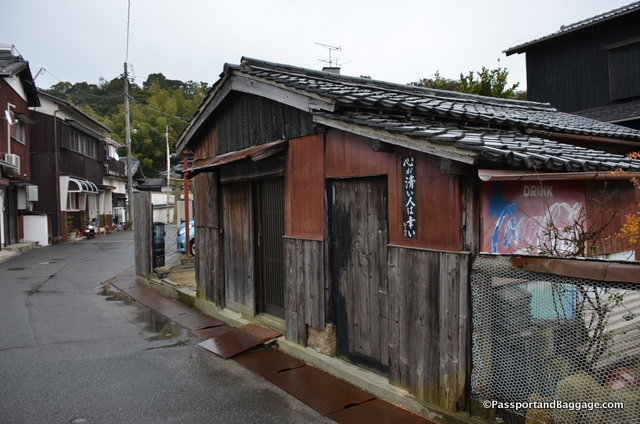 *
*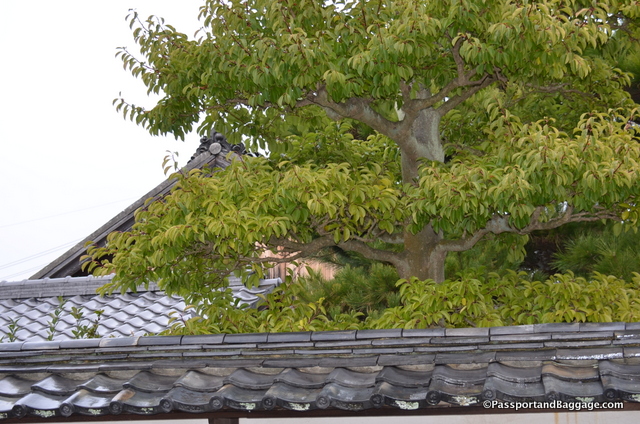
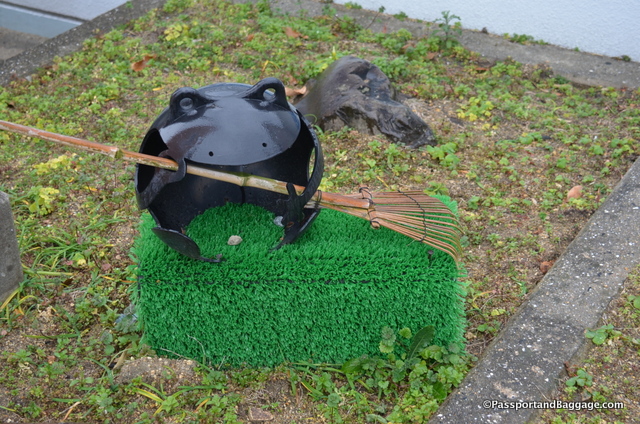 These critters are all over town
These critters are all over town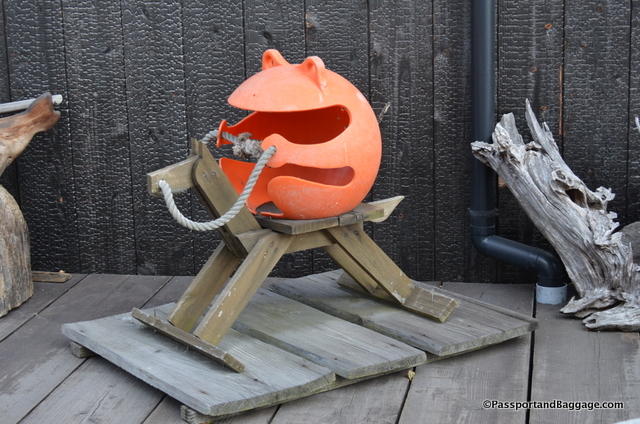 I found this sign in one store, I hope it tells you the artists name, but I don’t read Japanese.
I found this sign in one store, I hope it tells you the artists name, but I don’t read Japanese.
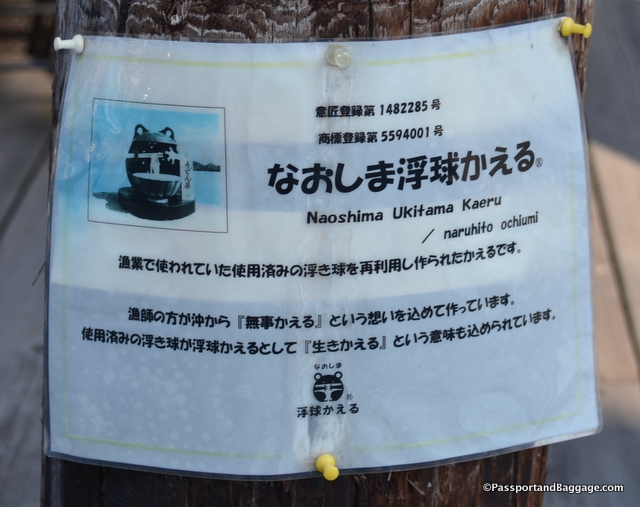
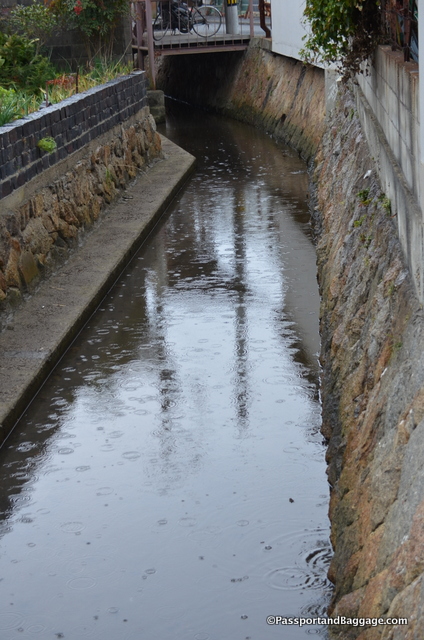 *
*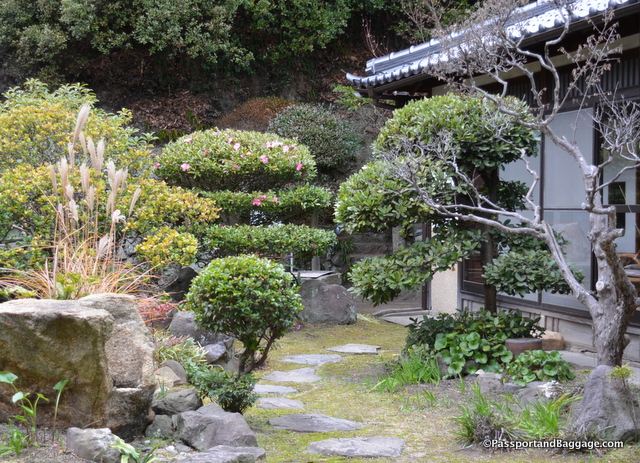 *
*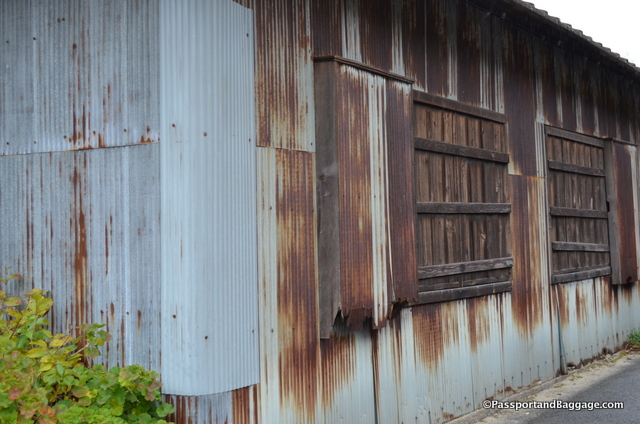 *
*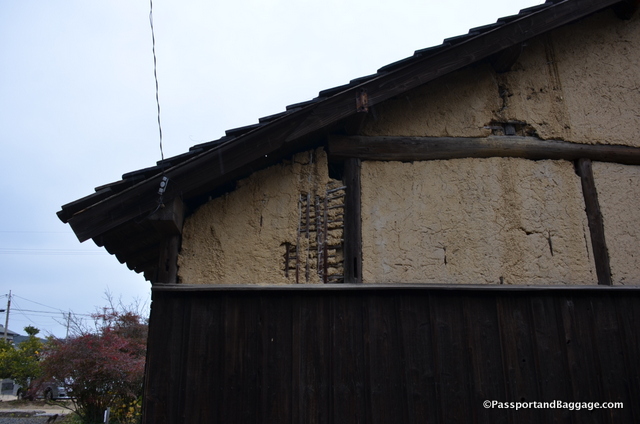 *
*  *
*
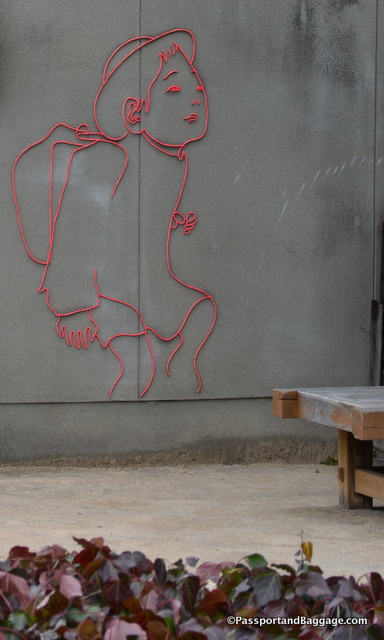
I stayed in Benesse for a total of 5 days, and it was most likely one day too short. I would have liked the opportunity to visit the island of Inujima, but it was closed for much of the time I was in the area and cramming it into the one day it was open and I had time, simply became unfeasible.
Benesse is truly an amazing experience and a must for anyone that loves architecture or art.
 *
*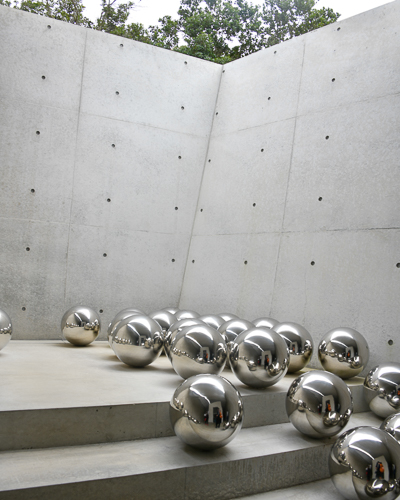 *
*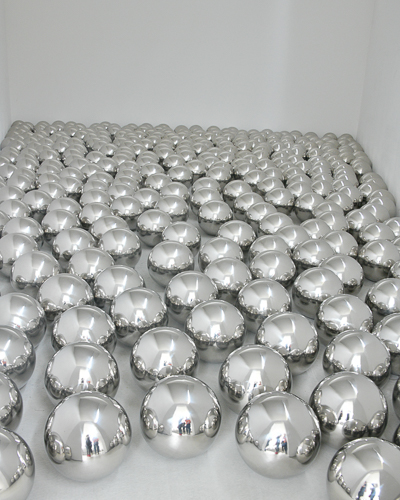 *
*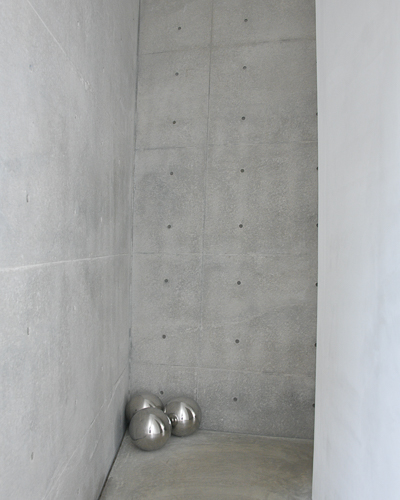
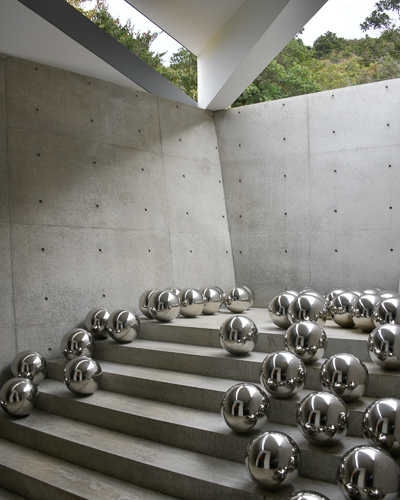
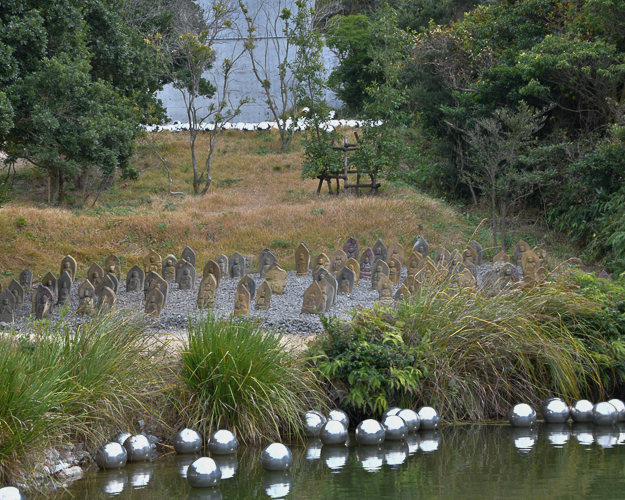
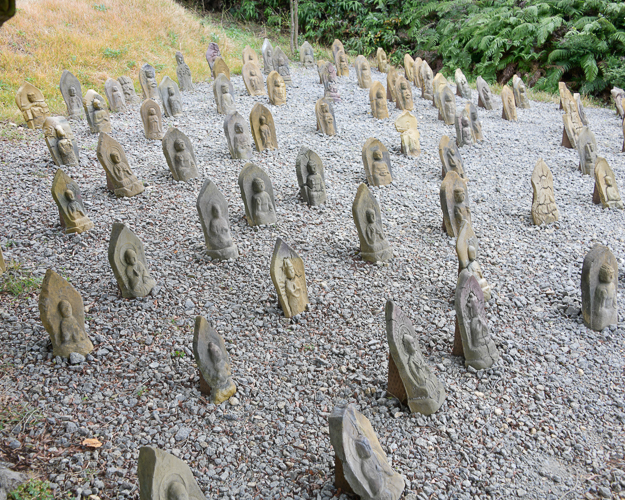
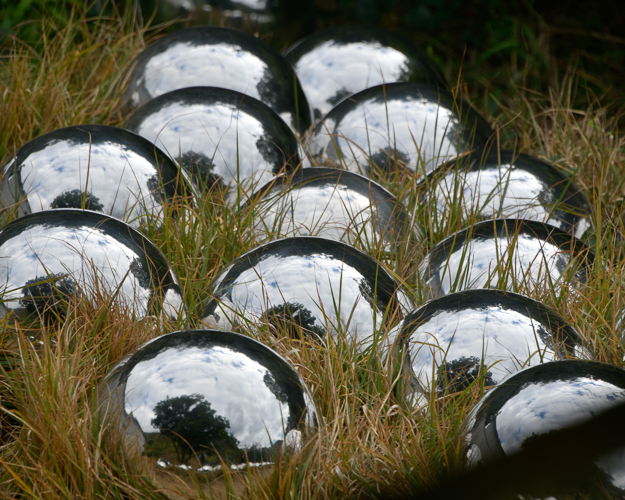
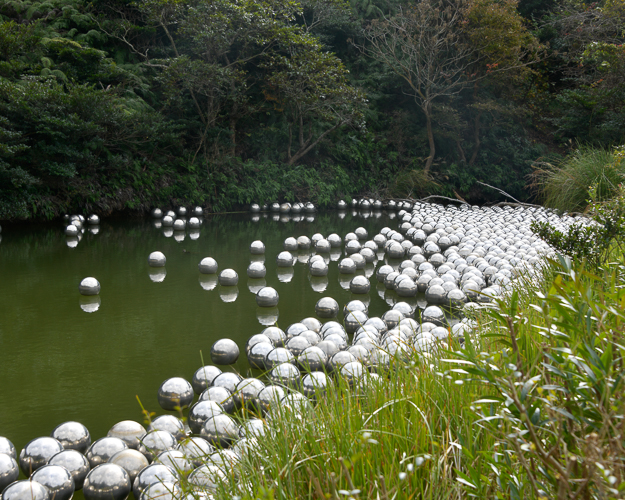
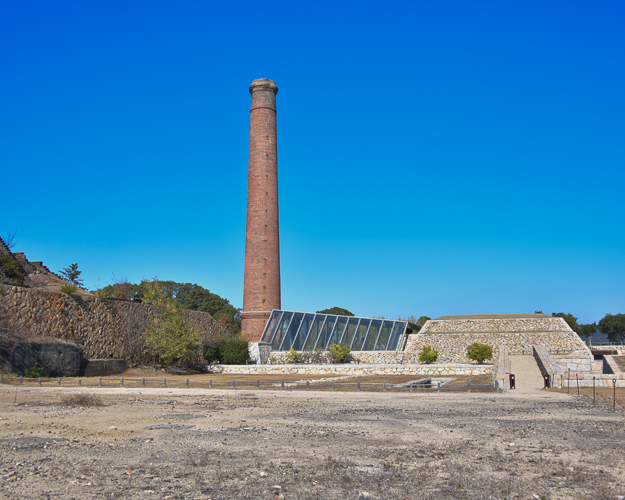
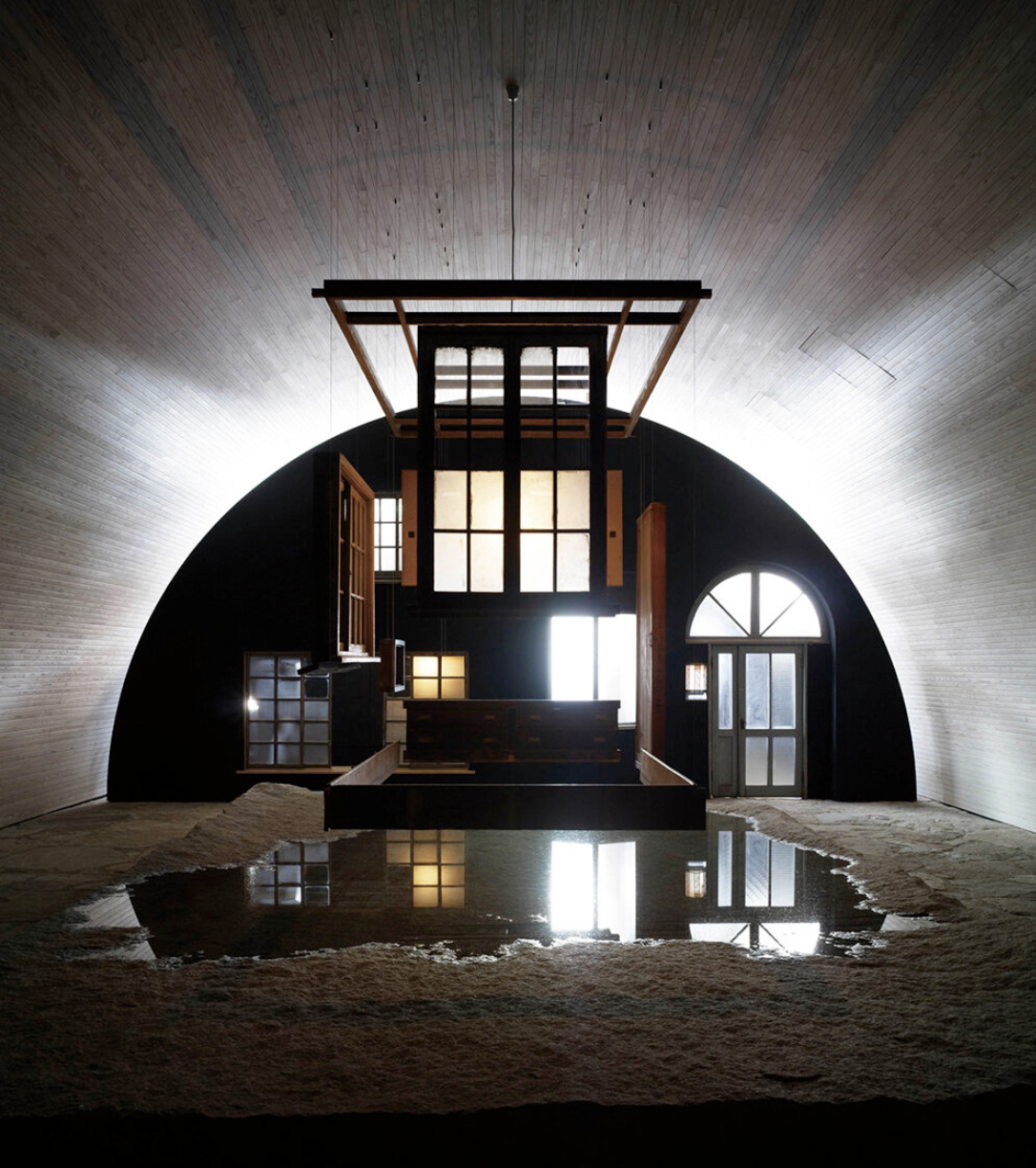
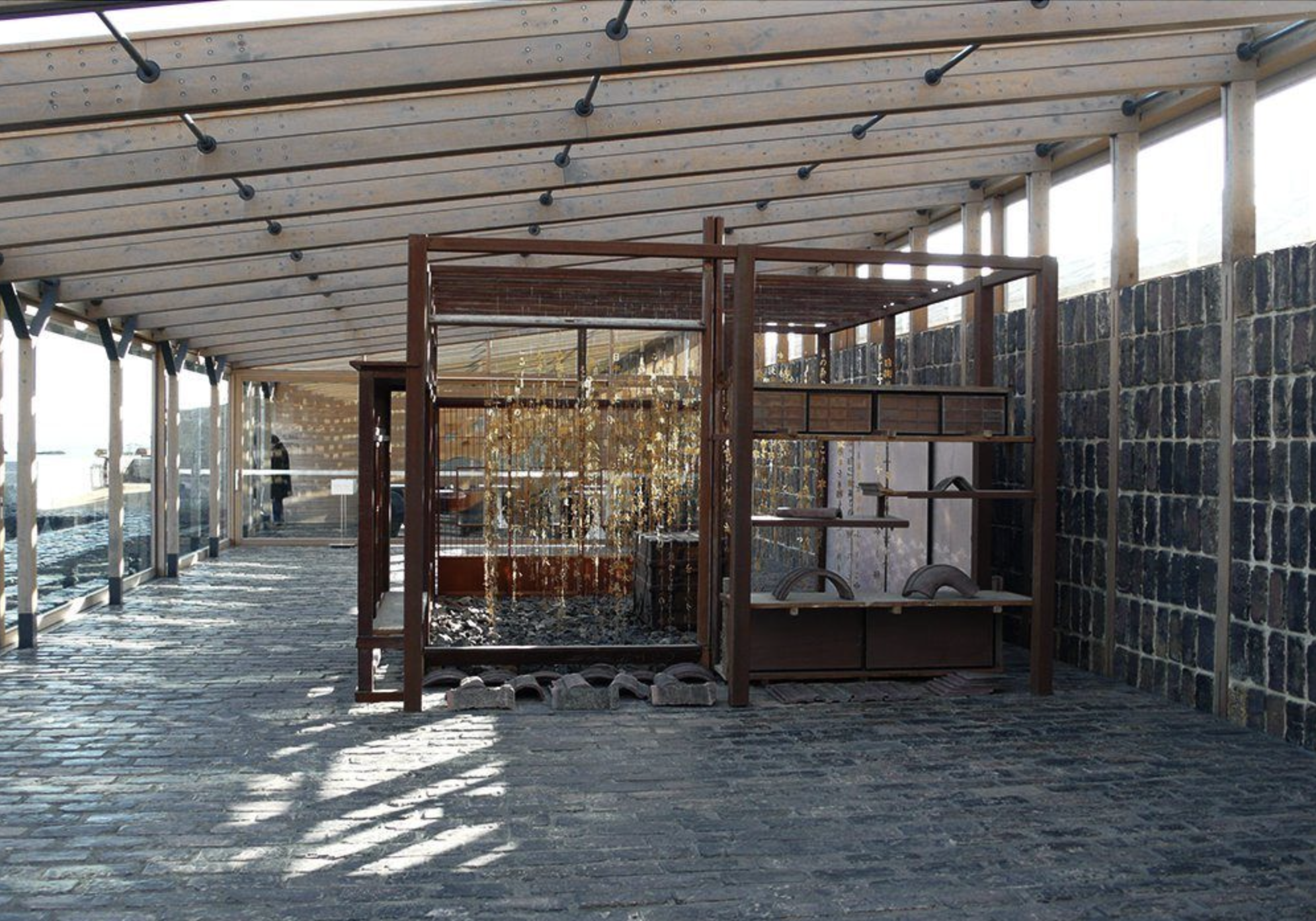
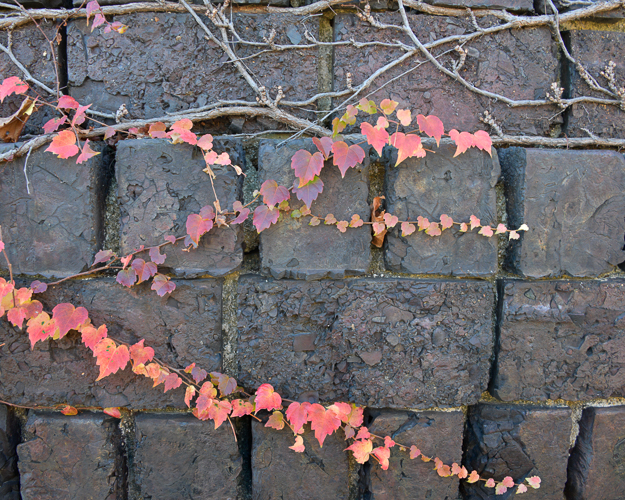

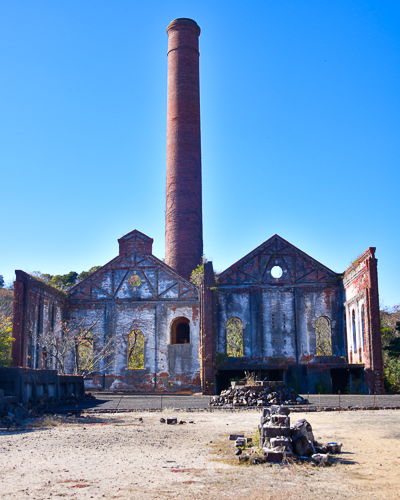
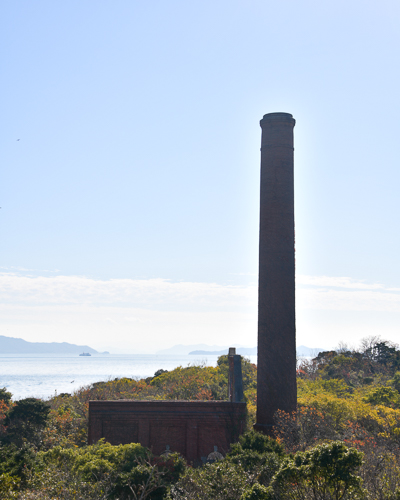
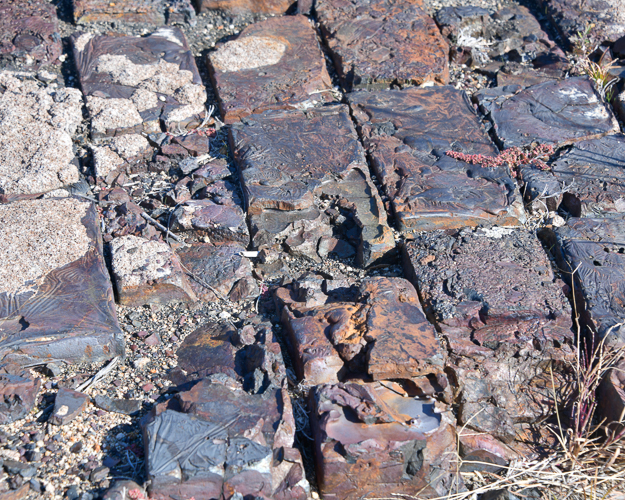
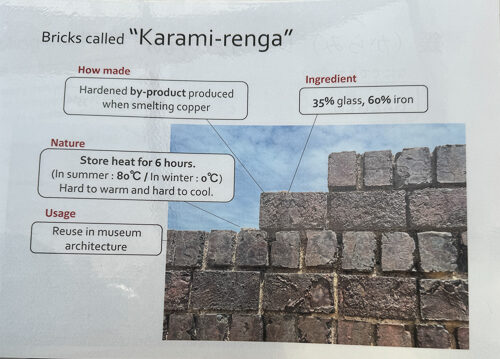
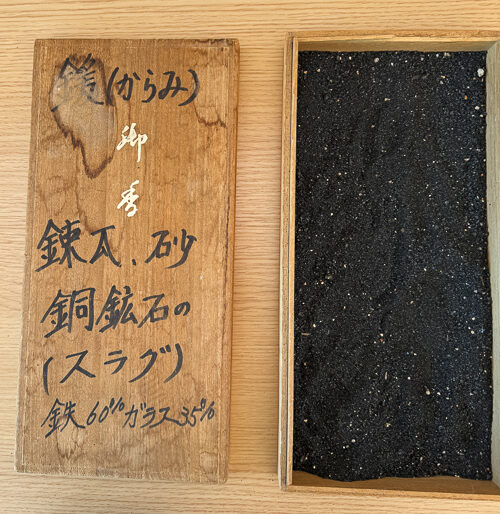
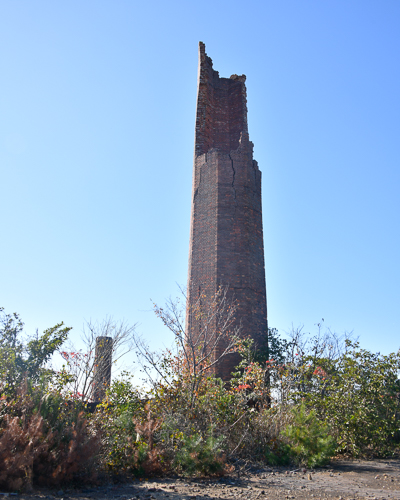

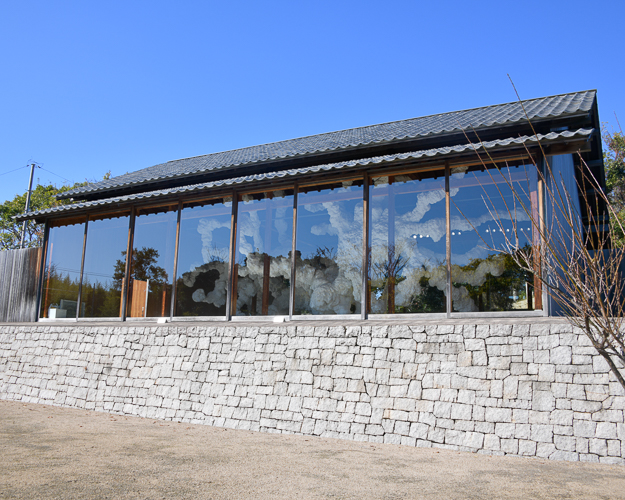
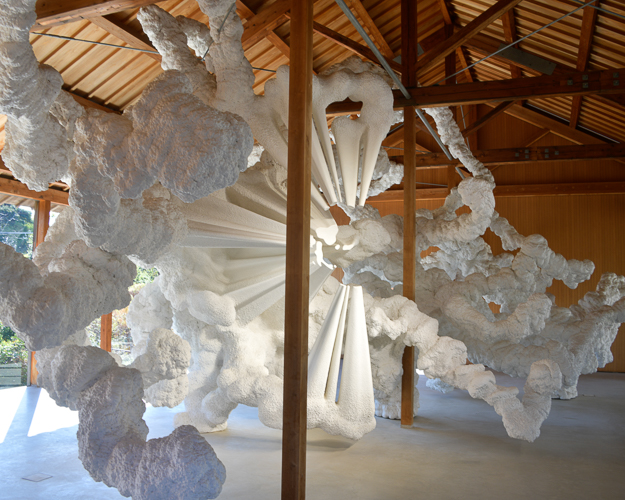
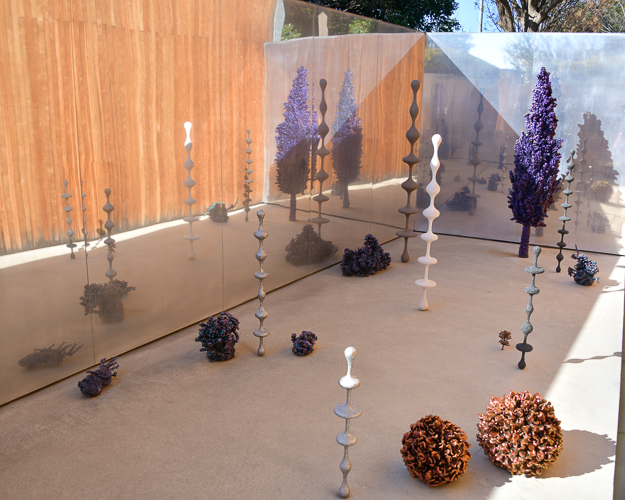
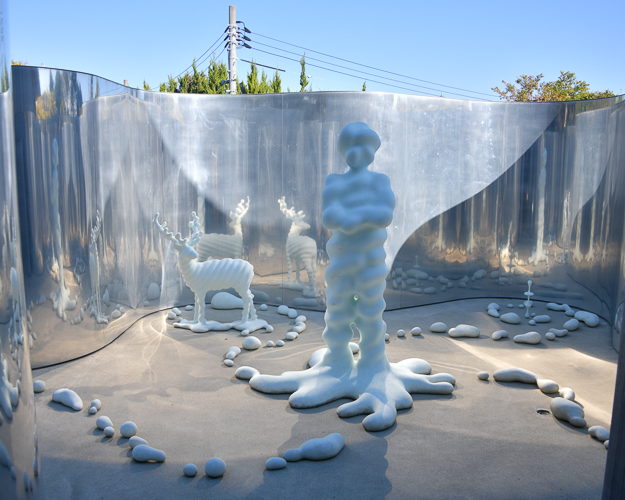
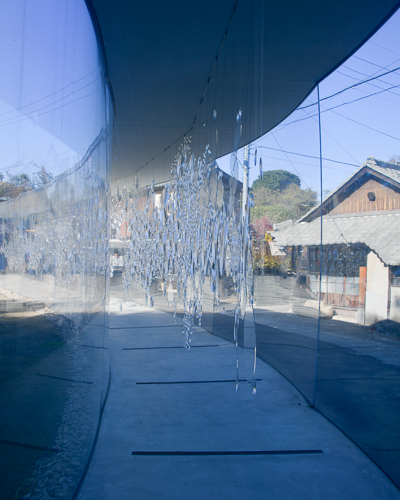 This piece is by Haruka Kojin. The work distorts the shape and size of the surrounding scenery through the use of numerous lenses of varying sizes and focuses.
This piece is by Haruka Kojin. The work distorts the shape and size of the surrounding scenery through the use of numerous lenses of varying sizes and focuses.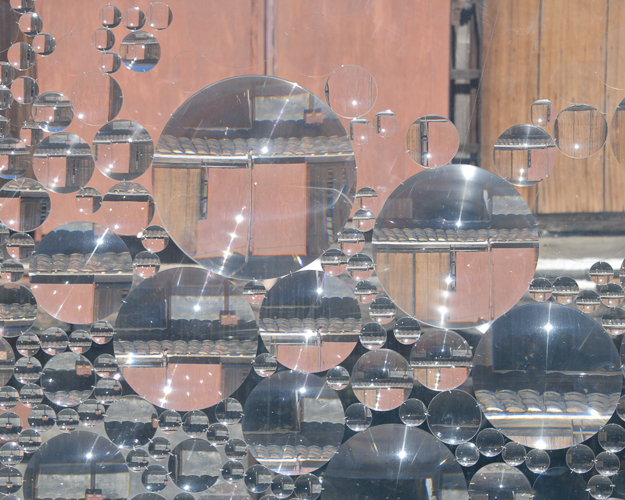
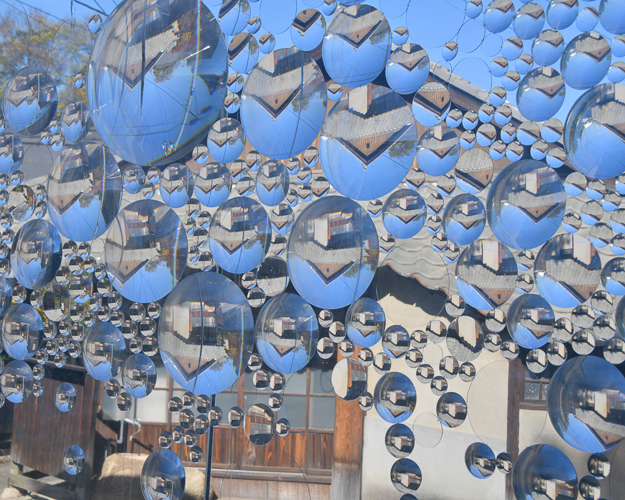
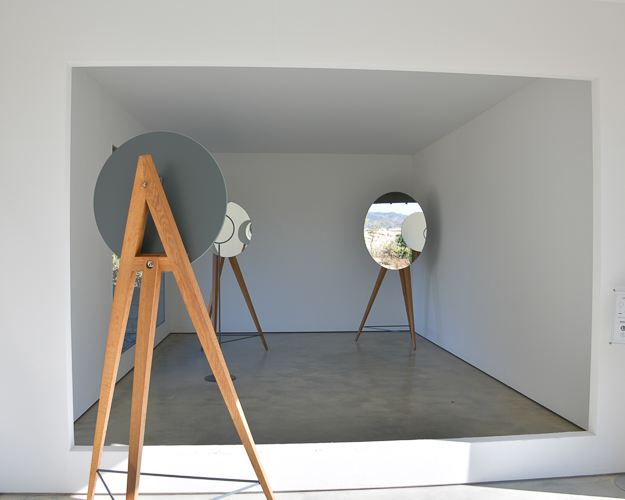
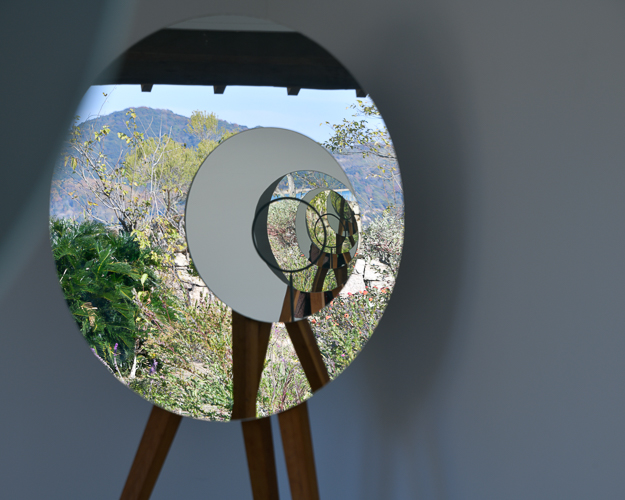
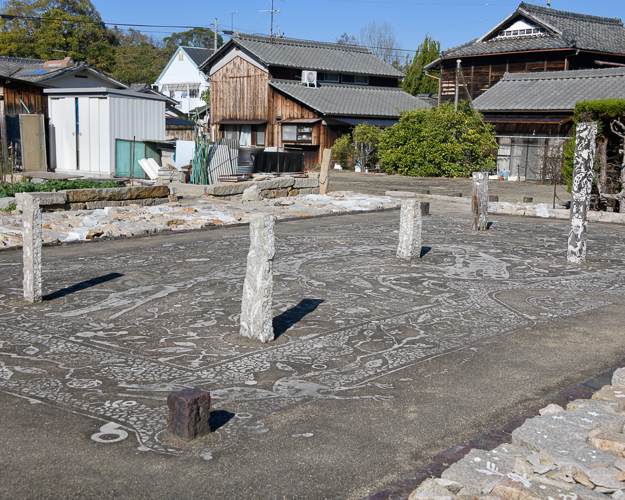
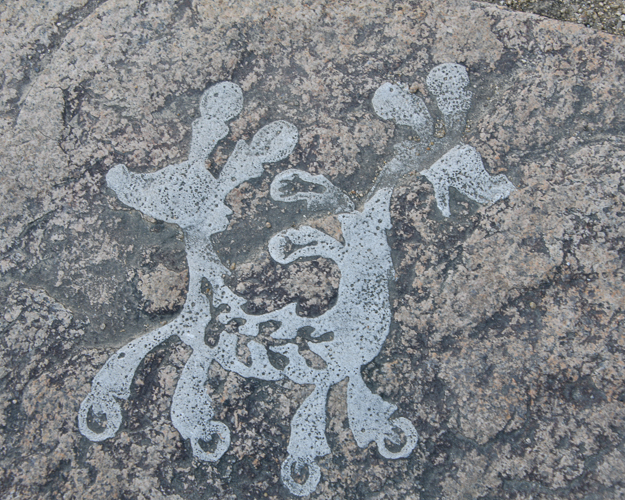
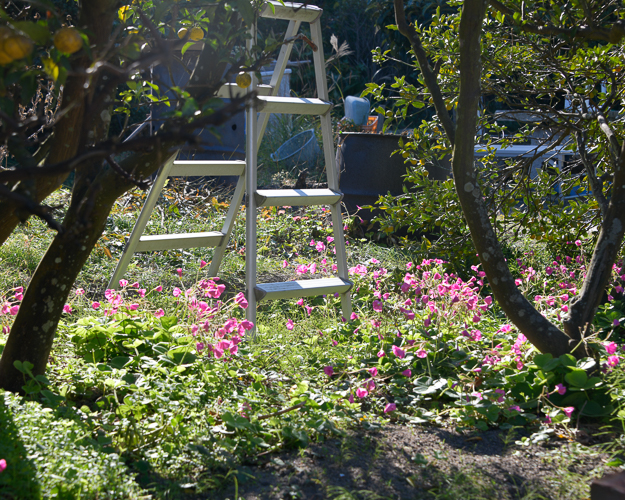
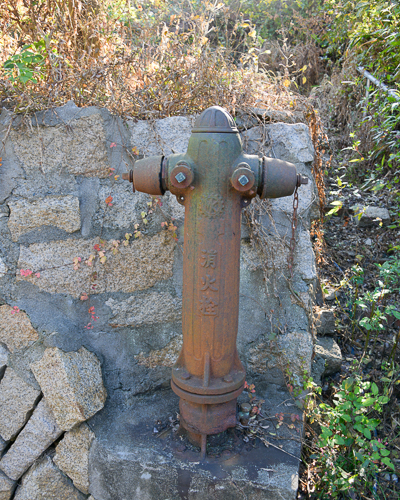
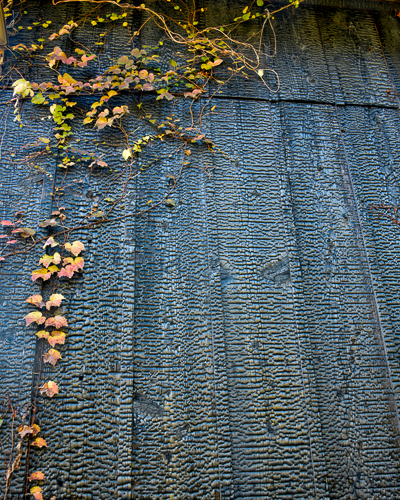
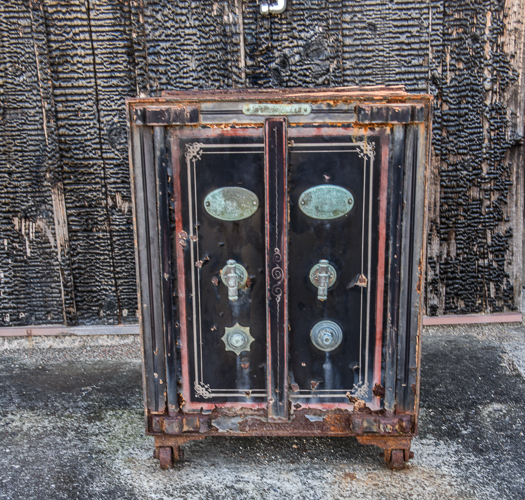
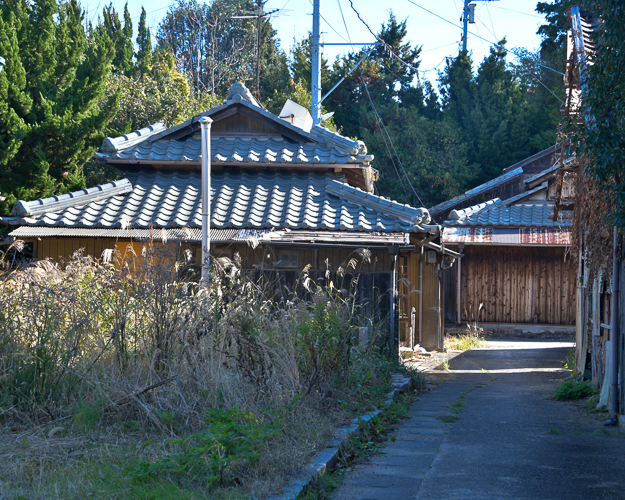
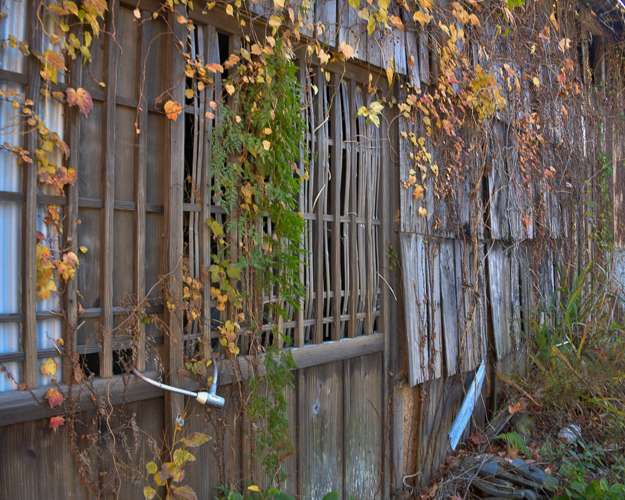 *
*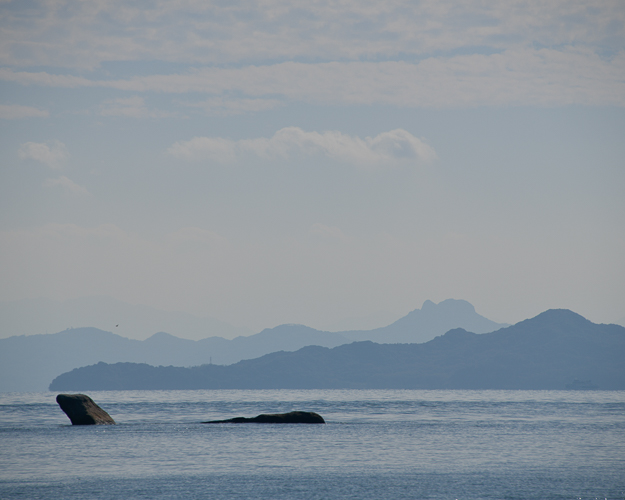
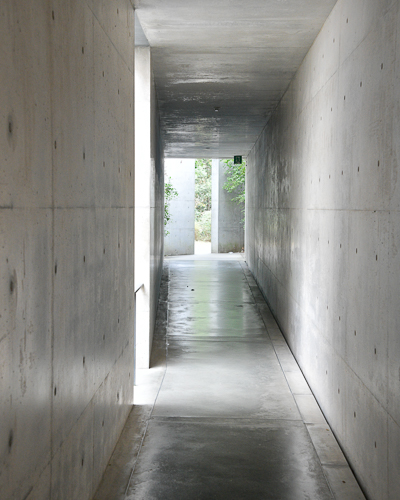
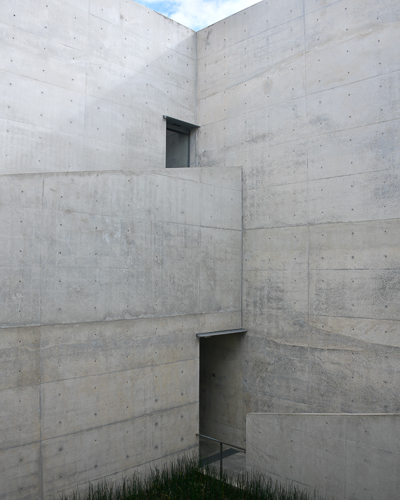
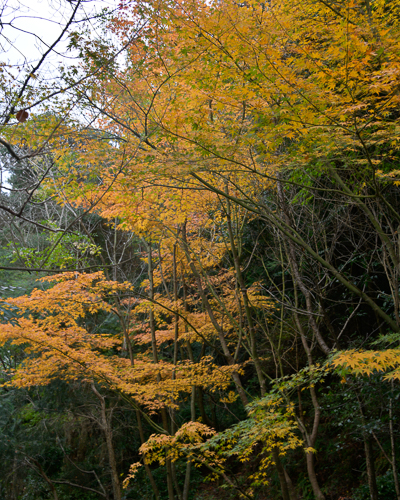 *
*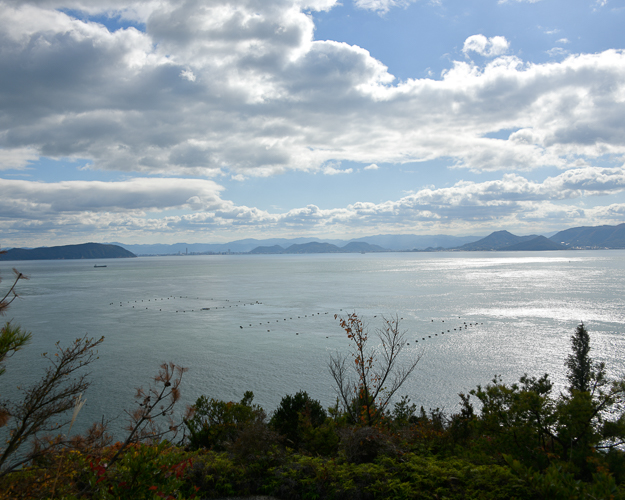 *
*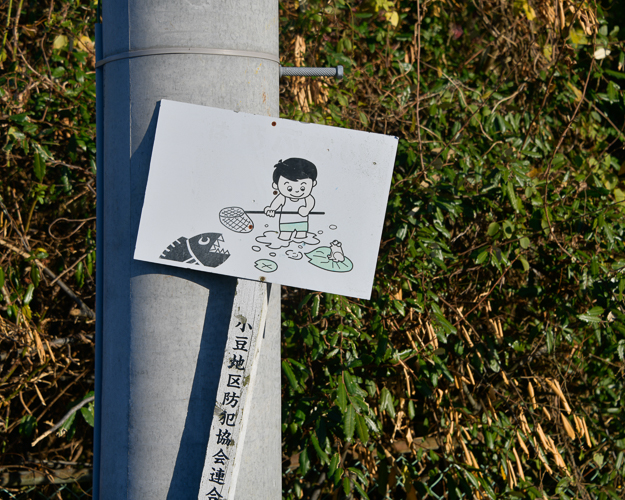 *
*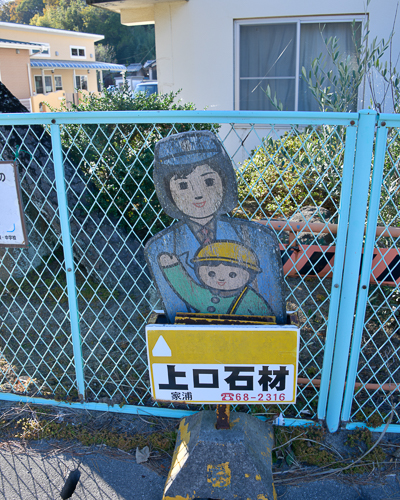 *
*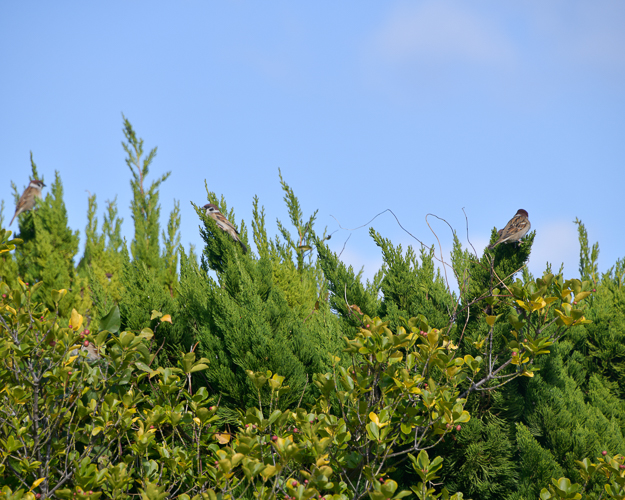
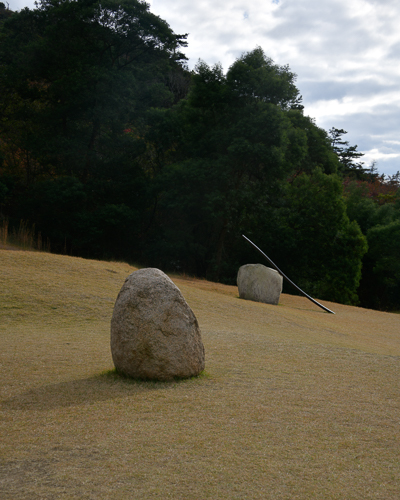 *
* *
*